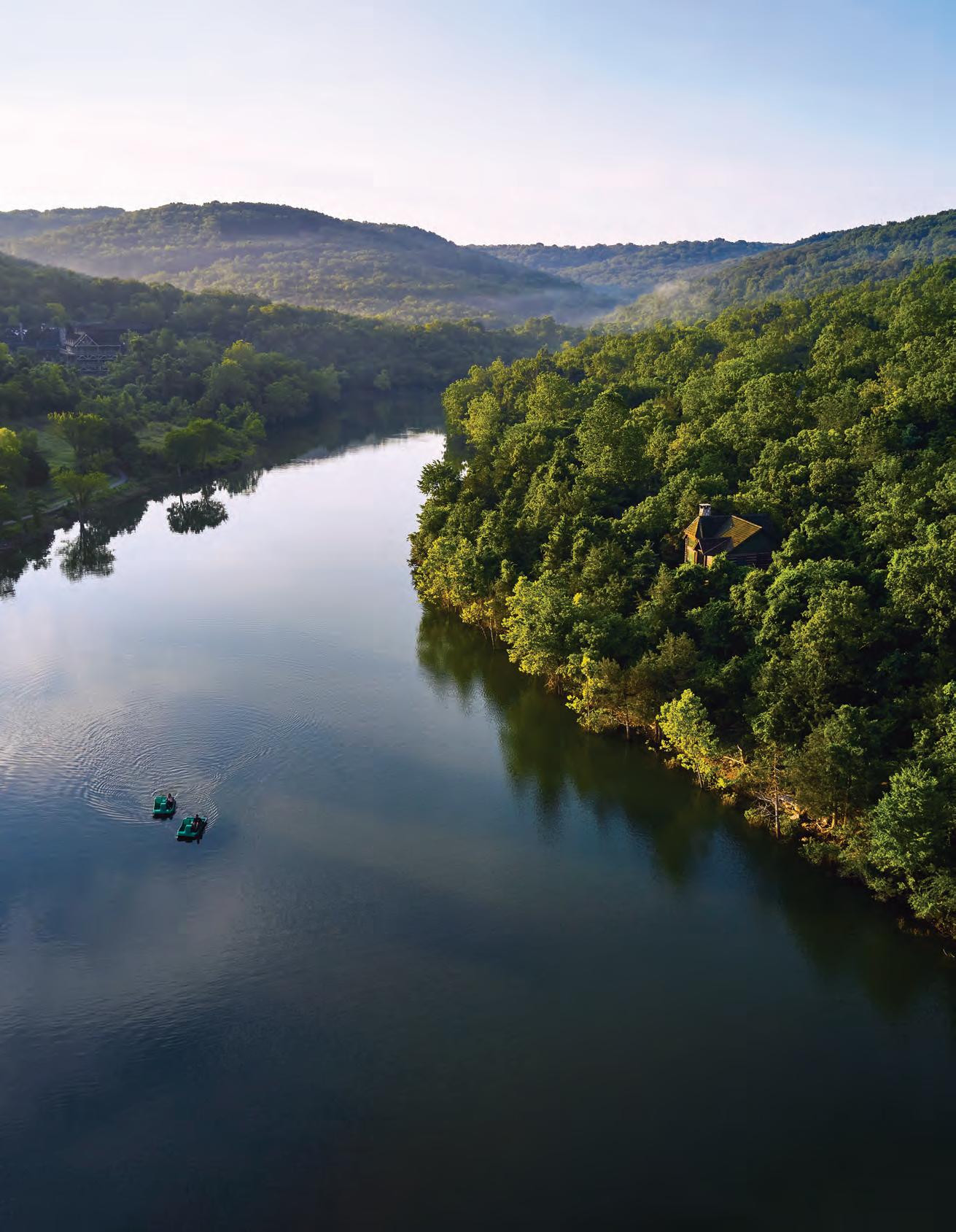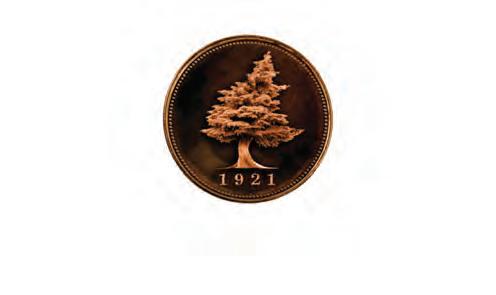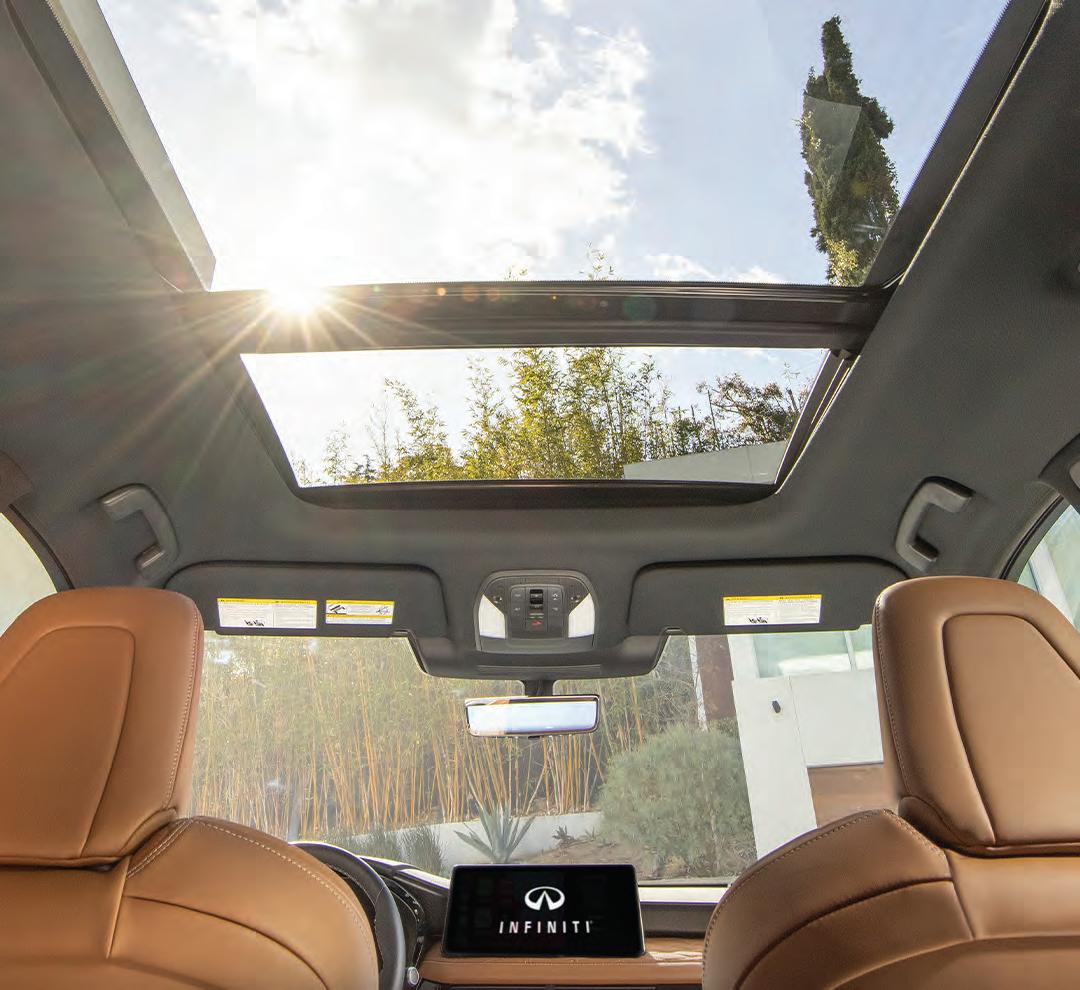






















Discover the great outdoors this summer as you journey along the Lost Canyon Cave & Nature Trail at Top of the Rock Ozarks Heritage Preserve. Following your adventure, take in the views of the Cathedral of Nature before exploring the Ancient Ozarks Natural History Museum. Tickets available online at:

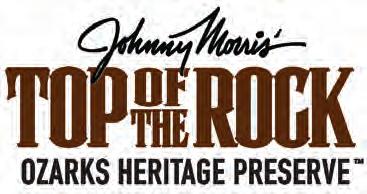
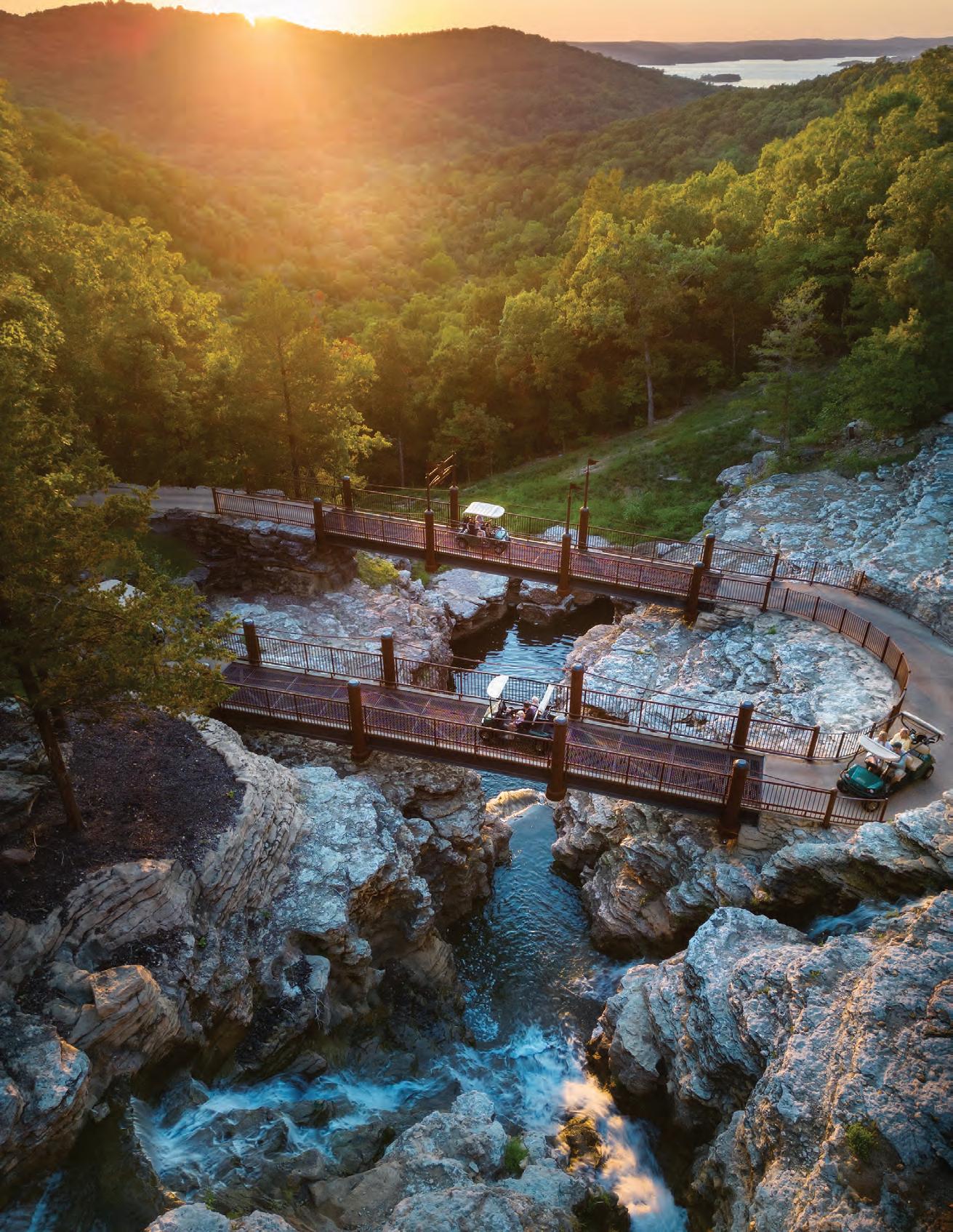
topoftherock . com


Explore 10,000 acres of the Ozark Mountains this summer at Dogwood Canyon. Experience nature in bloom with countless outdoor activities including horseback riding, fishing, kayaking, wildlife tram tours, hiking and biking.
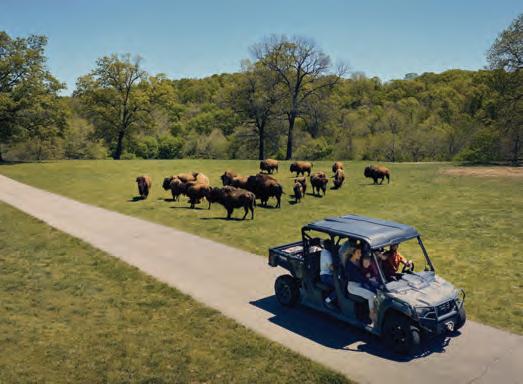


dogwoodcanyon . org


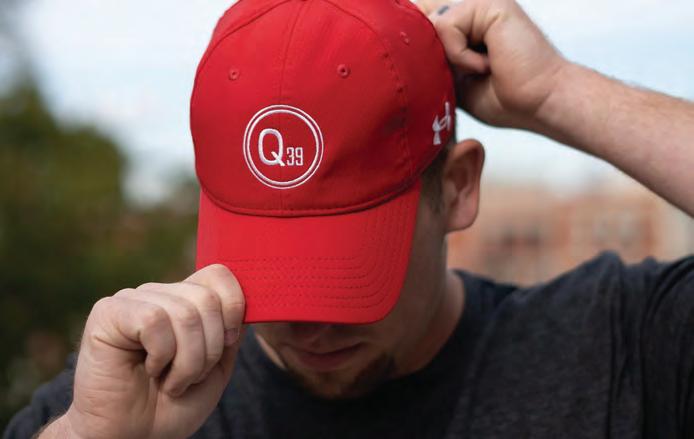


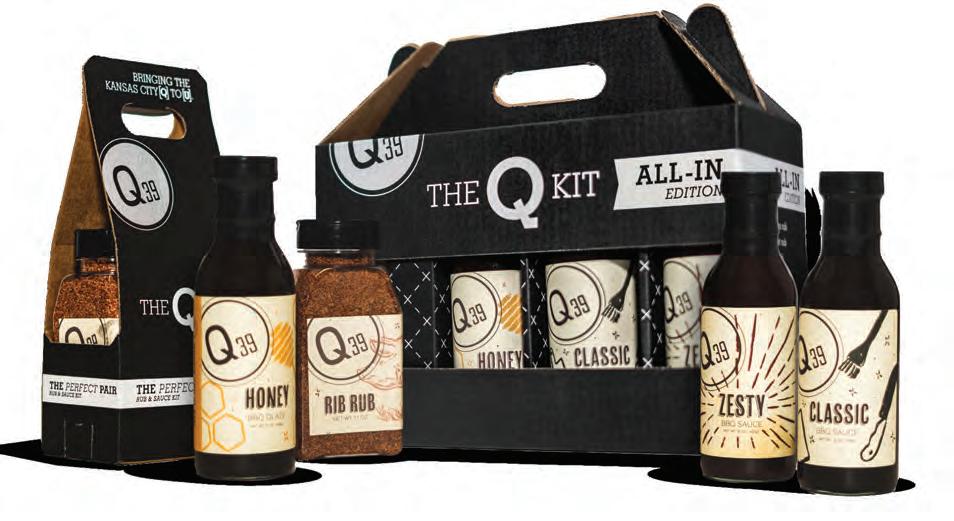
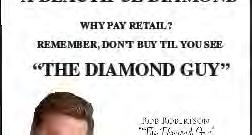

Voting among the five finalists is now open. Final ballot closes on Saturday, June 10.

Winners will be announced online and in print on Tuesday, August 1st.


Vote for your favorites in KC’s Best in 300+ categories at vote.kansascitymag.com


OUR MISSION
We love Kansas City like family. We know what makes it great, we know how it struggles, and we know its secrets. Through great storytelling, photography and design, we help our readers celebrate our city’s triumphs, tend to its faults and revel in the things that make it unique.
PUBLISHER Kathy Boos k athy@ kansascitymag.com
MANAGING EDITOR
Dawnya Bartsch dawnya@ kansascitymag.com
ART DIRECTOR Kevin Goodbar kevin@ kansascitymag.com
CONTRIBUTING EDITOR, STYLE & EVENTS Molly Higgins m olly@ kansascitymag.com
CONTRIBUTING EDITOR, FOOD Tyler Shane tyler@ kansascitymag.com
EDITORIAL INTERN
Reece Parker
COPY EDITOR
Kelsie Schrader
WEB COORDINATOR

Madison Russell
SALES
Angie Henshaw angie@kansascitymag.com
WRITERS
Nina Cherry, Jill Draper, Taylor Drummond, Ethan Evans, Natalie Torres Gallagher, Molly Higgins, Nicole Kinning, Reece Parker, Tyler Shane and Hampton Stevens
PHOTOGRAPHERS & ILLUSTRATORS
Zach Bauman, Shawn Brackbill, Caleb Condit, Barrett Emke, Jeremey Theron Kirby, Rebecca Norden, and Brandon Waldrop
SUBSCRIPTIONS
kansascitymag.com/subscribe or call 913-469-6700
Kansas City magazine is published monthly by 435 South, LLC. No part of this publication can be reprinted or reproduced without the publisher’s permission. Kansas City magazine assumes no responsibility for unsolicited materials. Kansas City magazine adheres to American Society of Magazine Editors guidelines, which requires a clear distinction between editorial content and paid advertising or marketing messages.


Wanna be a cowboy? Start here.

Discovering firsthand how we get our food
We talk to KC’s very own Americana folk legend.

Uncertain about the results she received from her mammogram, Claire came to us for a second opinion. She’d heard about our highly skilled team of dedicated breast radiologists. Our team was able to spot details her previous provider didn’t. Now, Claire and her friends make their routine mammogram with us a yearly shared experience, because they know better than anyone that where you get your mammogram matters.
Schedule your mammogram online at: KansasHealthSystem.com/Mammogram or call 913-588-1227

Classic western wear reimagined for summer



An Overland Park bakery uses traditional techniques to create this French staple.
Volunteers
Studies show Missourians like to roll the dice.
A 25-acre Lake of the Ozarks entertainment venue planned

make
A family farm workshop for the curious and brave illustrates just how a pig makes its way to the butcher shop.
Welcome warm weather with this light-hued beer.
Sadie Rucker talks vintage clothing finds and coffee.
Elite BBQ is now at the K.
The latest in KC food food news
Tasty food and interesting company
The Garden Club of Shawnee’s tour returns.


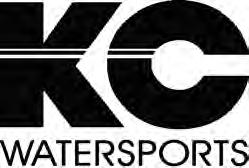
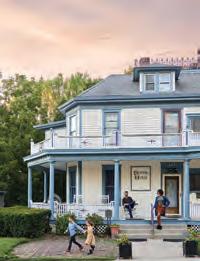
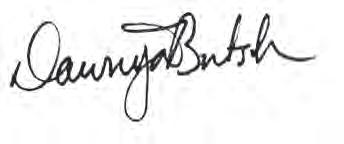



MY GRANDPARENTS
had what I would call a “hobby farm.” There were chickens, a few goats, several horses and, of course, Pinky the pony.
Pinky was a Shetland pony, and, boy, did us grandkids love Pinky. We would take turns saddling up on Pinky and, with my grandmother leading, slowly meandering through the gardens. Pinky would stop a lot to nibble on a bush or some other lushlooking plant. She really liked going through the vegetable garden. My grandmother would coax her along by giving her a sugar cube. It might be fair to say she liked these rides more than we did.
But I have to admit that my summer pony rides are about the extent of my equestrian knowledge. So learning about the lives of the rodeo riders and other horse-loving folks in this issue’s Cowboy Code feature was a treat. There’s Jess Pope, a humble rodeo circuit star, and Trae Q L Venerable, who has a rich family history of farming and ranching and is teaching others about the legacy of Black cowboys during America’s frontier days through his books.
Kansas City was a true frontier town that
transformed into a bustling metropolis. We took a look back at KC’s Wild West roots, specifically those of the American Royal and other historic sites dotting Missouri and Kansas.
All this rodeoing made me want some genuine cowboy boots, a prairie skirt and possibly a vest with fringe. That’s where Cowboy Couture comes in, a fashion spread showcasing on-theme clothes and jewelry by a few local designers.
And for a modern-day look at the family farm, Kansas City magazine’s food critic Tyler Shane spent time at a local farm learning about where our food comes from and how it makes its way to our dining room tables. Shane’s participation in taking a live, free-roaming pig and turning it into sausage and pork chops is a sobering experience that most of us won’t have. It’s a lesson in humility and life.
PHOTOGRAPHERS
This month’s story on a veterans’ rehabilitation program was shot by husband and wife team Scott and Shannon Schaefer. The duo has a photography studio in Columbia, Missouri.
Contributor Whitney Young, former newspaper reporter in Los Angeles and San Diego, wrote this issue’s profile on street dancer Leo Gayden. Whitney is a graduate of Northwestern University and lives in Chicago with her partner and their son.
Kansas City magazine’s food editor and critic Tyler Shane takes a deep dive into the metro’s Korean food scene this issue.

Our most talked-about story was a kansascitymag.com blog post about how small businesses with brick-and-mortar shops suffered during the NFL draft. By most accounts, the three-day draft was a huge success. The event went off without a hitch and drew crowds of more than 300,000 from across the country. However, a group of small business owners with shops close to the epicenter at Union Station say they suffered. Shop owners were told to stock up and get ready for large crowds, but as it turned out, locals feared no parking and stayed away and draft attendees didn’t explore the surrounding area, choosing to stick close to the venue.
People had lots to say about our story on social media.
I read a few such posts. Not sure how I feel about that. Some businesses thrived due to the draft. I see most attendees as being land locked around Union Station and Liberty Memorial. That’s where the throngs stayed and spent their money.

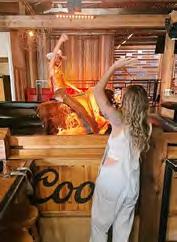 – @javadiva4
– @javadiva4

Dang didn’t realize it was local business draft weekend.
– @txmmykc
I’m a huge NFL fan and a huge Chiefs fan. Was very excited about the draft. And I went for a while on day one. But yes…my business took a major hit this weekend. We assume it’s because the lack of parking. But I know some businesses in the crossroads benefited from it. So I’m sure it wasn’t like this for everyone.
– @justintiv
Isn’t this more of a case of how an event like this (or the upcoming World Cup) benefits the city going forward? Won’t
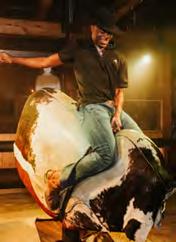
all businesses (be more likely to) benefit from events like this in the long-run? I think it sucks that restaurants were told to stock up, and I avoided the whole downtown/crossroads area this weekend because of all the speculation about how busy it would be. Hopefully the draft…the largest event ever held in KC…will give officials better information for future events so more people and businesses can benefit firsthand.
– @tbs.kansasThis seems to me to just be a bitchfest article written by people wanting to complain about something positive and successful and majorly productive for the city and the future of the city. You should have figured out a way to push and benefit from this event if you didn’t. You can’t just sit around waiting for things to come to you and complaining when you don’t do anything about it to take advantage.
– @ happytierskc“As it turns out, when you regularly purchase anomalies like chicken feet, bone marrow and beef suet, conversation is bound to strike.”
Kansas City magazine’s food critic Tyler Shane
SPRINGDALE , THE HUB OF NORTHWEST ARKANSAS

The spot for Nature, Music, Recreation, Art & Culture!




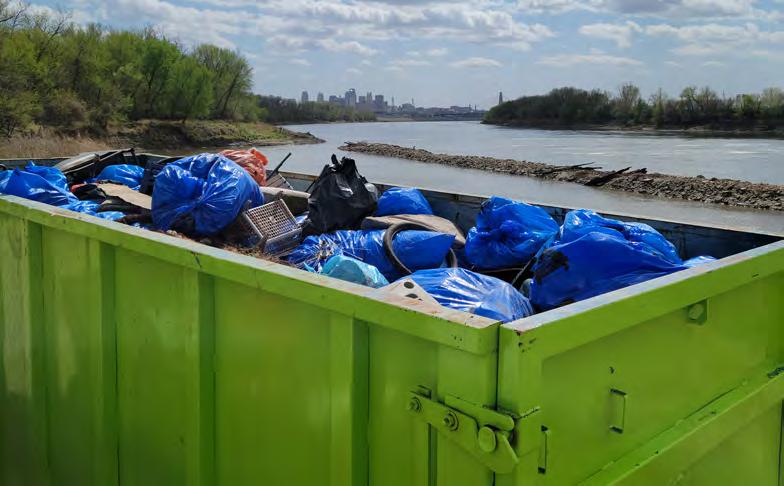
NOT MANY PEOPLE in Kansas City have boated on the Missouri River even though it flows right past the city’s doorstep.
“It’s big, it’s daunting, it’s difficult to access,” says Steve Schnarr, director of Missouri River Relief.
That’s one reason the Columbia-based nonprofit sometimes has a waiting list for its annual cleanup that starts at Riverfront Park and ferries volunteers six miles upstream and six miles downstream to pick up trash along the banks. It’s a safe way to take a boat ride and experience the “Big Muddy” in all its awesome volatility.
“Our mission is to connect people with the river,” Schnarr says. “It’s a powerful feeling to be out on that much water, the longest river in North America.”
The other reason volunteers line up to help is, of course, necessary maintenance. As the Missouri River winds southeast from its origin in Three Forks, Montana, to where it merges with the Mississippi River in St. Louis, it collects a lot of trash, especially during floods. This spring, the relief organization collected more than eight tons of trash from the river in Kansas City, including tires and debris from a homeless encampment. The average is five to seven tons.
Additional tons of trash are collected yearly from similar large-scale cleanups in Omaha, Nebraska; Weldon Spring, Missouri (near St. Louis); and Glasgow, Missouri (near Columbia).
Volunteers include school kids, scout troops and adults of all ages. Some are connected with Missouri Stream Team, a group that sponsors an adopt-a-stream or lake access program much like adopt-a-
highway. Others are corporate teams from the event’s sponsors.
“A lot of volunteers really enjoy their time out on the river,” Thomas says. “If we can get more people to explore it, we can continue to restore it.”
Missouri River Relief also encourages exploration by hosting the world’s longest nonstop river race, the MR340, scheduled this year for August 1-4, which coincides with a full moon on August 1. Hundre ds of boaters in canoes, kayaks and stand-up paddleboards compete to finish the river’s three hundred and fortymile stretch from Kansas City to St. Charles.
“There’s been a lot of people and a lot of organizations trying to awaken Kansas City to the river flowing through it,” Schnarr says. The past disconnect was partly due to the West Bottoms stockyards dumping animal waste from packing houses directly into the water. Today, more cities recognize the truth of a bumper sticker Schnarr’s group sells: “We all live downstream.”
211 River Cleanups
Organizers try to make the cleanups fun. Volunteers choose team names, then don gloves and life jackets as they board flat-bottom jon boats to spend two hours along the banks stuffing trash into bags. Afterward they gather for lunch, followed by a trash contest with a half-dozen categories. Some recent winners: sunglasses for Most Useful, a single shoe for Most Fashionable, a stuffed teddy bear and a skull for Best Animal Finds, a set of dentures with gold teeth for Weirdest, a rainbowcolored basketball for Best Muddy Ball, and a flying plastic disc for Most Likely To Be Used as a Weapon. Sometimes there’s even a message in a bottle.
1,032 Tons of Trash
31,736 Volunteers
About two hundred and forty people registered for the April 15 cleanup, although that number dropped after a forecast of rain. “We all crossed our fingers and the weather held out quite perfectly,” says Alyssa Thomas, the organization’s education and outreach coordinator.
When Schnarr began volunteering with Missouri River Relief in 2001, he says cleanup crews removed legacy trash from the past one hundred and fifty years—items like glass bottles, scrap metal and tires on the rim that bobbed in the water. There’s still quite a few tires, but not as many as before. Now there are more Styrofoam cups and single-use plastics.
To celebrate its twentieth anniversary two years ago, the organization led a massive cleanup from Kansas City to Columbia. Staff crews and several hundred community members along the two hundred-mile route spent two months collecting more than twentythree tons of trash, reaching some areas that had never been accessed before.
Does Schnarr ever feel like Sisyphus, tasked with pushing a boulder up a hill that always rolls back down?
“It’s frustrating because what we’re doing is not a solution,” Schnarr says. “It’s a Band-Aid on a bigger problem. But he says it’s not futile. “We have to keep working at it. Missouri residents get forty percent of their drinking water from the Missouri River, and fresh water sources are becoming more and more valuable. I try to keep focused on our mission.”
Explore, enjoy and restore the river. Repeat.





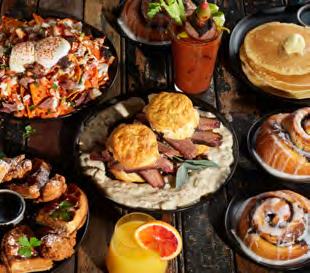
IN TODAY’S WORLD, gambling is easier than ever. Gone are the days of traveling to a casino with a pocket full of cash. Now, with the swipe of a finger and a credit card number, a bet can be made.
Studies have shown that with the increased accessibility there has also been a rise in gambling addiction. The Port KC Problem Gambling Advisory Committee, with the help of Elite Research, conducted a prevalence study last year that surveyed 3,301 Missouri adults ages eighteen and older.
The study found two out of three Missouri adults gambled within the last year and one out of twentyfive met the criteria for having a gambling disorder, with one in five considered at-risk gamblers, meaning they could easily slip into addiction.
“It’s an addiction that gets very little attention,” says Keith Spare, chair of the gambling advisory committee. “Gambling triggers the pleasure reward center and gives the body cues that what you’re doing is a good thing. It’s exciting or it helps ease emotional pain. But at the same time, it’s costing you more and more.”
Experts agree that gambling disorders are on the rise and not just because of the ease of online gambling. Wiley Harwell, executive director of the Oklahoma Association on Problem Gambling and
Gaming, says that gambling addiction is increasing due to the “gamification” of sports.

“Companies are incorporating gambling and sporting activity,” Harwell says. “Their goal is to make the two synonymous.” This trend is already visible in places like Australia and Europe, where Premier League soccer sponsors are mostly betting companies. Many predict that this will someday be a reality in U.S. sports as well.
“That crosses state lines, whether you have sports gambling in your state or not,” Harwell says.
Right now, Missouri has minimal resources to address the issue, according to Spare, a former addiction counselor. The state only has about $500,000 to aid in problem gambling, which he says “is like putting a thimble of water on a fire.”
Harwell will join Spare in presenting the Missouri gambling disorder prevalence study at the Midwest Conference on Problem Gambling and Substance Abuse, which takes place this month in KC. Their hope is that the study will lead to greater funding for gambling disorder prevention and education.
• The need to gamble with increasing amounts of money in order to achieve the desired excitement.
• Restlessness, irritability and/ or unsuccessful efforts when attempting to cut down or stop gambling.
• Persistent gambling thoughts.
• Gambling when feeling distressed or going through life changes.
• Lying to conceal the extent of involvement with gambling.
• Jeopardized or lost relationships, jobs or other opportunities because of gambling.
• Relying on others to provide money.
A study shows one in five Missourians could become gambling addicts.
BY NICOLE KINNING
“ The state only has about $500,000 to aid in problem gambling, which Spare says “is like putting a thimble of water on a fire.”

CONSTRUCTION OF A highly anticipated family-friendly resort with rides and entertainment at Lake of the Ozarks is set to begin this year, with plans to open and dazzle tourists by summer 2024.
Developers of the $350 million project known as Oasis at Lakeview promise the new resort and entertainment district set in Osage Beach will be packed with winding roller coasters, playful rides, an indoor water park, an amphitheater, a marina, luxury hotels and a variety of eating options.

The land was acquired by Big Thunder Marine back in 2021, and plans for the new year-round tourist destination have been in the works for the past couple years. The project is set to span twenty-five acres along the Lakeport property at Highway 54 and Jefferies Road.
The project’s two main developers are SkyView Partners and Tegethoff Development, both based in St. Louis. “The Osage Beach community has been asking for more family-friendly entertainment options, and I am proud to work with SkyView Partners and Tegethoff Development to help deliver such a large investment to our city,” says Osage Beach Mayor Michael Harmison.
SkyView has brought several amusement-oriented attractions to cities across the country, including the SkyView Atlanta observation wheel in Georgia and SkyStar ferris wheel and Bay Plunge tower in
San Francisco, California. Tegethoff Development is responsible for numerous luxury lifestyle developments in the Midwest.
The development team recently announced an agreement with Marriott International to build a full-service, four hundred-room Marriott hotel featuring a large conference center, full-service spa, outdoor pool and pickleball courts on the edge of the lake as part of the development. The hotel will be located adjacent to both the fifty thousand-square-foot indoor water park being constructed by the manufacturer OpenAire and the two-hundred-foot-tall observation wheel. The marina will have public docks and a boardwalk leading out onto the water.
Missouri Lieutenant Governor Mike Kehoe estimated that the park would create approximately five hundred new jobs and bring at least five hundred thousand more tourists to the growing Ozarks area. “I welcome this project for its future impact on mid-Missouri’s economy as well as its commitment to bringing a centrally located, state-of-theart entertainment district to the Osage Beach community,” Kehoe says.
Partners on the project hope to make Oasis at Lakeview a premier tourist destination for the Midwest. “We look forward to elevating the family-friendly offerings at this proven tourist destination,” says Todd Schneider, co-managing partner of SkyView Partners.
A 25-acre lakefront resort and entertainment venue is coming to Lake of the Ozarks.







Founded more than fifty years ago, Colonial Gardens (27610 E. Wyatt Road, Blue Springs) used to just be known as a nursery and gardening store, but over the years, it has transformed to also include a farm-to-table kitchen serving rotating menu items, a curated market selling local goods and sustainably sourced products, and orchard and bramble patches for folks to handpick seasonal fruits.
Now, Colonial Gardens is also offering a unique dining experience—with alpacas.
This fun farm experience allows guests to enjoy an intimate brunch surrounded by apple trees in the orchard, along with the opportunity to meet the alpacas and learn about Colonial Gardens’ care for these special creatures.
The picnic includes tailored brunch boxes for adults and children made with fresh items from Colonial’s garden, orchard and market, along with spectacular views of alpacas, of course. MOLLY HIGGINS
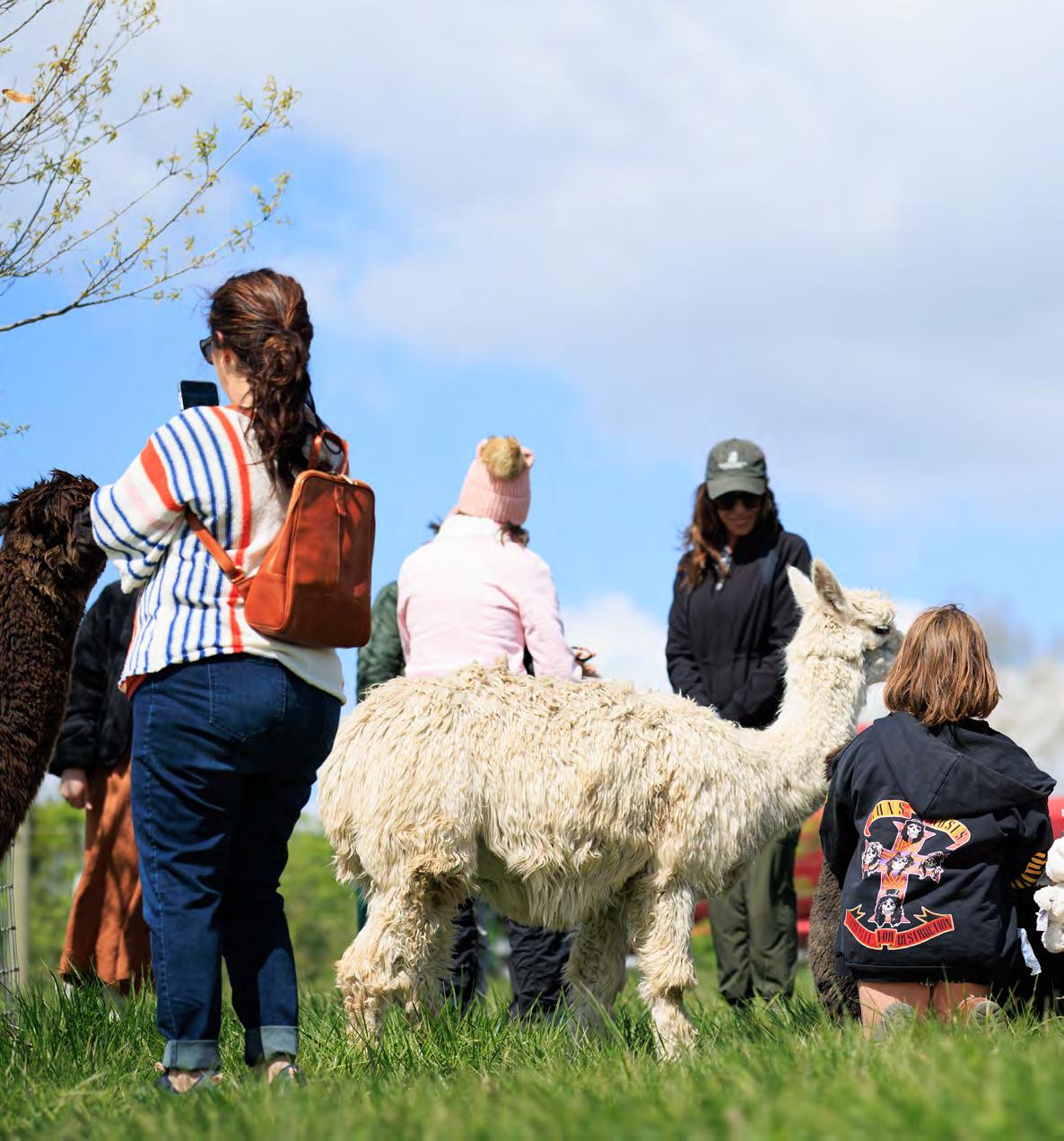
June 2. 8 pm.
Legend Clint Black has been a music industry star for more than three decades. His debut album, Killin’ Time, transformed country music and cemented Black as a true country-music traditionalist. Clint’s newest album, Out of Sane, is mostly original songs and recorded with an eclectic group of musicians. June 2. 8 pm. Yardley Hall.
June 2–3.
KC celebrities Paul Rudd, Jason Sudeikis and Rob Riggle started the Big Slick celebrity fundraiser for Children’s Mercy back in 2010, and it has grown incredibly over the years. It now includes a celebrity softball game at Kauffman Stadium on Friday, with options for VIP upgrades like meet-and-greets with the stars and complimentary food and drinks. The Big Slick Party & Show will take place on Saturday at the T-Mobile Center and feature comedy from the KC celebs, plus more from actor-comedians David Koechner, Eric Stonestreet and new host Heidi Gardner. June 2–3. Times vary. Kauffman Stadium and T-Mobile Center.
June 2–4.
Conductor Michael Stern leads one of America’s brightest young composers, Jessie Montgomery, with a new work co-commissioned by the Kansas City Symphony. Violinist Montgomery uses symphonic sounds to convey complex emotions in “Five Freedom Songs,” with support from soprano Julia Bullock. Frederick Delius’ orchestration of “The Walk to the Paradise Garden,” which portrays the timeless yearning between young lovers, will be performed along with Gustav Mahler’s “Fourth Symphony,” which delves into themes of childhood and innocence. June 2–3, 8 pm; June 4, 2 pm. Helzberg Hall.
June 3. 7 pm.
Maryland-native band All Time Low formed two decades ago, in the heyday of many other successful emopunk bands. Their seventh full-length album, Last Young Renegade, follows a character also called Last Young Renegade on a lyrical journey full of
June 3. 4 pm.
Written and performed by Max McLean, this performance captures legendary author C.S. Lewis’ magnetic personality, eloquence and wit in a stage experience that ventures deep into the psyche and soul of one of the world’s most influential and beloved figures. June 3. 4 pm. Kauffman Theatre.

nostalgia, synthesizers and cinematic soundscapes. 96.5 Not-the-Buzz presents the concert, with support from fellow early-2000s emo-punk boy band Mayday Parade. June 3. 7 pm. The Midland Theatre.
June 7. 8 pm.
Pink Floyd UK tribute band Brit Floyd returns to the stage in honor of the fiftieth-year anniversary of the iconic album The Dark Side of the Moon. The nearly three-hour-long set also includes hits from Pink Floyd’s sweeping catalog, along with special effects for audiences’ psychedelic journey to the past. June 7. 8 pm. The Midland Theatre.
June 8. 7 pm. In 2018, three white guys watched a made-for-TV movie and decided everyone needed to hear their opinions on it. Half a decade later, they are still going strong watching and reviewing every cheesy Christmas movie they can find. Now, the guys from the Deck the Hallmark podcast are coming
to KC to review a movie live for the podcast recording and audience Q&A. Who says you can’t celebrate Christmas in June? June 8. 7 pm. recordBar.
June 8. 8 pm.
Denver-based DJ Illenium has quickly made a name for himself in the world of dance music through catchy remixes and original productions. His innovative, immersive performances with live instruments and cutting-edge visuals have earned him spots at festivals like Lollapalooza and Coachella. June 8. 8 pm. Azura Amphitheater.
June 10. 5:45 pm.
North Carolina native country music superstar Luke Combs is making a stop in KC on his arena world tour. Known for his classic country voice and original songwriting, he skyrocketed to fame in the last five years with romantic hits like “The Kind of Love We Make” and “When It Rains It Pours.” June 10. 5:45 pm. GEHA Field at Arrowhead Stadium.
June 10 & 11.
Comedian Taylor Tomlinson, who gained widespread fame through her stand-up specials with Netflix, is in KC for three almost-sold-out shows. In her Have It All tour, the comedian is touring the US, Australia and New Zealand, discussing heavier topics with sincerity, crassness and heart. June 10, 7 & 9:30 pm; June 11, 7 pm. The Midland Theatre.
June 11. 7 pm
Weezer has remained enduringly popular the last thirty-plus years, with their pop-rock sound and catchy melodies making them a steadfast favorite among Gen Xers and millennials. This time around, they’re on their Indie Rock Road Trip tour in North America, coming to KC with another emo-rock legend of the same era, Modest Mouse. June 11. 7 pm. Azura Amphitheater.
June 13. 7:30 pm.
Folk-bluegrass trio Nickel Creek returns from their nearly decade-long hiatus with their newest album, Celebrants, which continues their legacy of Americana music. Special guest Gaby Moreno will open the evening with her signature Jazz-soul-blues fusion, which earned her a Latin Grammy for Best New Artist. June 13. 7:30 pm. Kauffman Theatre.
June 15. 7:30 pm.
Lee’s Summit native jazz-guitarist
Pat Metheny has received twenty Grammy Awards and cemented himself as a legend of the genre, constantly expanding his repertoire and pushing limits. Now performing in his Side-Eye project— an ongoing showcase featuring a rotating cast of musicians— Metheny will showcase two rising stars: pianist Chris Fishman and drummer Joe Dyson. June 15. 7:30 pm. Kauffman Theatre.
June 16 & 17.
The KC-centric block party returns for its ninth year this summer. Along with several stages, dozens of musicians, food trucks and festival bars, this year also includes additional special events like the Taps & Tastes Experience, Proper Cannabis VIP Experience, Beer Dinner at The American, Ride to Boulevardia bike tour and more. June 16–17. Times vary. Grand Boulevard at Crown Center.
June 16–18.
Kansas City Symphony presents Michael Stern conducting Carlos Simon’s lively homage to his family’s experience in the Pentecostal church in “AMEN!”; world-renowned pianist Emanuel Ax playing Beethoven’s exciting “Piano Concerto No. 3”; and Stravinksy’s enduring masterpiece, “The Rite
of Spring.” June 16–17, 8 pm; June 18, 2 pm. Helzberg Hall.
June 17. 7:30 pm.
Creators and stars of hit prank show Impractical Jokers are on the road for their first new live comedy tour in three years, the DRIVE DRIVE DRIVE DRIVE DRIVE tour. Season nine of the show recently returned in a new celebrity format, and jokesters
Q, Murr and Sal are ready to showcase their new viral videos and jokes across the U.S. June 17. 7:30 pm. T-Mobile Center.
June 17 & 18.
The Heartland Men’s Chorus performs this new multimedia musical celebration of LGBTQ+ love, family and perseverance. This unique family-friendly show draws inspiration from favorite Disney films like The Little Mermaid and Mary Poppins. The musical extravaganza will feature the chorus and the orchestra as they perform new musical arrangements accompanied by animation from Disney and Pixar films. June 17, 7:30 pm; June 18, 3:30 pm. Kauffman Theatre.
June 23 & 24.
The third annual Q BBQ Fest returns for a two-day smoking, grilling and eating extravaganza. The elevated barbecue festival
June 23. 9:30 pm.
You, too, can be the dancing queen (over seventeen), in this disco-themed dance party, where you’ll hear ABBA hits and other disco favorites from the ’70s and ’80s like The Bee Gees and Cher. Disco attire is encouraged as you dance all night long (all night)!

June 23. 9:30 pm. The Truman.
gives guests the chance to sample the best barbecue from local, regional and national pitmasters on the Chiefs’ home turf. A new VIP ticket option this year lets guests enjoy an all-you-can-eat-and-drink experience for four hours, along with self-guided tours of the Chiefs Locker Room, the Bud Light Locker Room Club and the Chiefs postgame press conference room. June 23, 6 pm; June 24, 3 pm. GEHA Field at Arrowhead Stadium.
June 23–25.
Pianist Kenny Broberg brings his forceful sound to Rachmaninoff’s “Piano Concerto No. 2,” a piece created while the composer underwent hypnosis following an ill-fated premiere of his first symphony. Italian guest conductor Valentina Peleggi leads the KC Symphony in Tchaikovsky’s moody and bold “Symphony No. 4.” June 23–24, 8 pm; June 25, 2 pm. Helzberg Hall.
June 24 & 25.
The award-winning, feel-good, animated kids’ series hits the road for fans of all ages to see the Heeler family as they’ve never seen them before. Based on an original new story written by Bluey creator Joe Brumm, with new music by composer Joff Bush, this spectacular stage show also features both puppetry and live actors. June 24, 12:30 and 3:30 pm; June 25, 12:30 and 3:30 pm. Kauffman Theatre.
June 24, 6:30 pm.
The ultimate millennial emo-pop band Fallout Boy was formed over twenty years ago in a suburb outside of Chicago. After several critically and commercially successful EPs and albums in the early aughts, they took a hiatus and returned with a more refined, less emo-punk sound. Ever since, they have been enduringly popular with a loyal fan base in aging millennials hungry for some nostalgic angst. June 24, 6:30 pm. Azura Amphitheater.
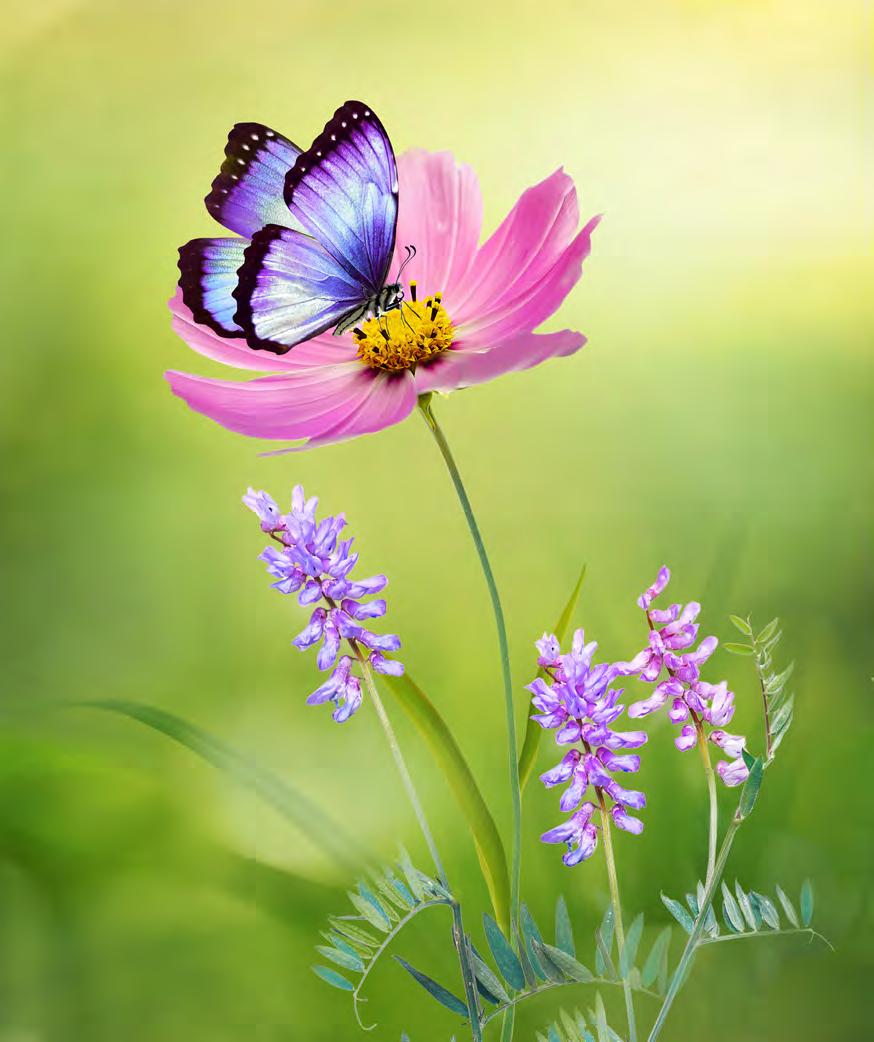
AFTER A FOUR-YEAR HIATUS, the Garden Club of Shawnee will once again host its wildly popular Garden Tour highlighting some of the community’s lushest landscapes.
“Our last tour was in 2019, and with the two-year absence due to Covid, we’ve been delayed, but we kept our heads,” says Sandra King, a member of the club. Now, club members are ready to swing open the garden gates and showcase five spectacular gardens.
Since its establishment in 1990, the club has been committed to helping people and neighborhoods enhance their green spaces, “growing the community one garden at a time,” King says.
This year’s tour features five unique Shawnee gardens that include everything from extended outdoor living areas and bubbling water features to whimsical bridges and extravagant, inventive flower combinations.
The gardens are handpicked after “a small committee reviews recommendations received from members, neighbors and friends, then selects the gardens that reflect the unusual, the unique, the creative use of problem areas and overall beauty,” King says.
Many of the gardeners have been curating their landscapes for more than a decade, experimenting with different plants, flowers and vegetables, and they’re eager to share their knowledge.
⊲ The Rossbach garden has been in the works for nearly thirty years. Through trial and error, the Rossbach’s have figured out what grows best in their heavy clay soil and are ready to share the fruits of their labor.
⊲ The Thowe garden is the product of two local interior designers who have transformed their small backyard into a living extension of their home. The Thowe’s cozy outdoor living space features a fire pit, a dining table and a raised garden bed. The space is perimetered by a corten steel fence and adorned with a variety of climbing vines and greenery. Potted plants placed throughout give the space texture and visual depth.
⊲ Geib’s “Whimsy Waters” garden is straight out of a fairy tale. The charming landscape is dotted with winding paths, bridges, ponds and a bubbling stream. It’s adorned with lots of sun-loving plants such as daisies, lavender and iris. The Geibs originally designed their garden for their children, but they are now sharing their wonderland to inspire others.
⊲ The Hostetter garden is home to dozens of different varieties of ferns and hostas and is frequently visited by birds and butterflies. A large water feature with impressive rock work makes for a relaxing space. In the sunnier areas there is a bright butterfly garden and a banana grove.
⊲ The Caspari-Epperson’s garden is a fairly shady space, but that has not stopped them from creating a “garden oasis.” A variety of plants and flowers, from bleeding hearts and ferns to lilies and roses, have been used in the landscape, which also includes a bubbling waterfall.


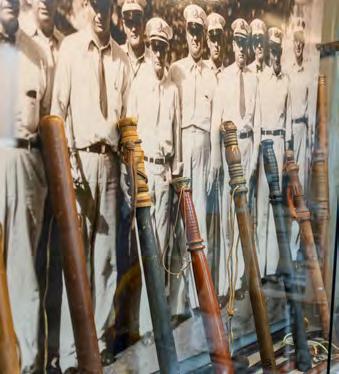
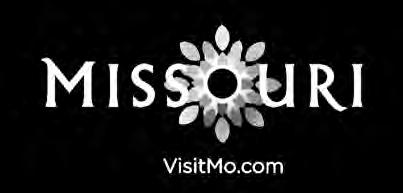
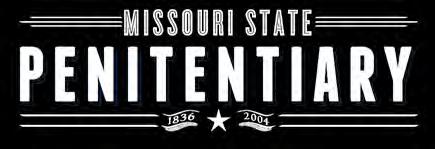


For The Rainmakers, it was important to represent what life looked like from the middle of the country, something “Downstream” laid the thematic groundwork for. This remains a pride point for Walkenhorst.
“We didn’t want to pretend we were British or from California or New York,” Walkenhorst says. “We were true to who we were and where we were from.”
Walkenhorst, along with guitarist Steve Phillips and bassist Rich Ruth, wanted to create something original. “We wanted to create something vibrant and new and exciting,” Walkenhorst says. “[Playing music] was everything to us.”
The band quickly became popular regionally. “It was a wonderful time to be a musician in Kansas City,” Walkenhorst says. “There were so many places to play, and a lot of clubs would book you four or five nights in a row.”
After releasing their first self-titled album and then adding drummer Pat Tomek to the mix, Walkenhorst switched to guitar and became frontman. Their Midwestern values translated abroad, and the band saw international success.
The Rainmakers album held a spot on the Billboard 200 for twenty-two weeks, and it did even better in Europe, leading to tours abroad. Their hit “Let My People Go-Go” made its way onto the UK Singles Chart Top 20.
After The Rainmakers broke up in 1998, Walkenhorst began focusing on writing and releasing music under his own name. The band reformed in 2011 with a couple of new members, and they played their last gig in July 2021 in Norway.
Now approaching his seventieth birthday, Walkenhorst has been reflective recently. “I think seventy is one of those times where people take inventory of where they are in life, what they’ve done and what they want to do now.”
 BY NINA CHERRY
BY NINA CHERRY
FROM FRONTING MIDWESTERN rock ‘n’ roll band The Rainmakers to his solo endeavors, Americana legend Bob Walkenhorst has been writing songs for forty years. Walkenhorst’s career began in Kansas City in the early eighties, and his music catalog is lengthy. When asked if any of his songs have special meaning for him, Walkenhorst’s response is veiled but playful: “It’s like asking me to pick my favorite child,” he says.
“‘Downstream’ was one of The Rainmakers’ early songs, but it so much summed up what we were trying to do,” Walkenhorst says. “We wanted to write music that was rooted in American rock ‘n’ roll, but we wanted it to be rooted in Missouri, in Kansas City.”
He describes “Downstream” as “sketches of fantasy,” shooting the breeze with famous Missourians Mark Twain, Harry Truman and Chuck Berry along the Mississippi River.
Walkenhorst knows what he doesn’t want to do: He’s done with the exhaustive touring and loud rock performances. Now, he’s focused solely on songwriting.
“That’s the thing that is still interesting and exciting, coming up with a new song,” Walkenhorst says.
Walkenhorst performs a solo acoustic set every first and third Wednesday at the West Plaza neighborhood bar Mike Kelly’s Westsider, showcasing his new music to his “small but loyal following.” He also writes, records and releases a new song every month on his Patreon.
“There’s nothing as exciting as making something out of nothing,” Walkenhorst says.
Whether it’s enjoying a refreshing hand-crafted beverage on the Ozarks Tap and Pour Craft Beverage Tour or cruising down a scenic water trail on a kayak, we love our city and know the best places to eat, drink and play.

SEE YOU IN SPRINGFIELD, MISSOURI










For better or for worse, the biggest trendsetter today is TikTok, as Gen Zers recycle and reimagine vintage trends with a contemporary eye.

The newest aesthetic for summer is no different. Commonly referred to as “coastal cowgirl,” this trend reimagines old classic western wear and beachy boho design with a playful flair. This summer’s trend is the “cool girl” version of last summer’s “coastal grandmother” trend, which focused on a more preppy look with items like oversized sun hats and polo shirts.

The coastal cowgirl trend meshes the rugged, vintage aspects of the cowboy aesthetic, like leather boots and hats, with the relaxed, easybreezy coastal feel of pastel knits and oversized button-downs. Instead of classic masculine cowboy hats, folks are adding pops of unexpected color and textures. Classic leather cowboy boots are a must, with unique vintage or brightly colored boots being a hot-ticket item.
This style is a more feminine reimagination, urging folks to mix contrasting textures like crochet and leather for a new spin on the classic look. The trend borrows from classic festival fashion, meaning it works well for almost any summer occasion.
—MOLLY HIGGINSOVER THE LAST FEW YEARS, influential sartorialists have heralded the resurgence of the bolo tie, encouraged, no doubt, by fashion houses like Balmain, Prada and Versace featuring it in recent collections. (The Duttons of Yellowstone Ranch may also deserve some credit.) This would make for a precious comeback story, but the truth is, the iconic Western neckwear has never really gone out of style.
The bolo tie’s origin story is murky. There’s a legendary yarn about an Arizonian cowboy named—no joke—Victor Cedarstaff, who purports to have invented it in the 1940s as a way to avoid losing his hat to the wind. Native American tribes have a more credible claim: The earliest bolo can be traced to the early 1900s, when Hopi, Navajo and Zuni men used leather cords and ornaments to fasten neckerchiefs at their necks.
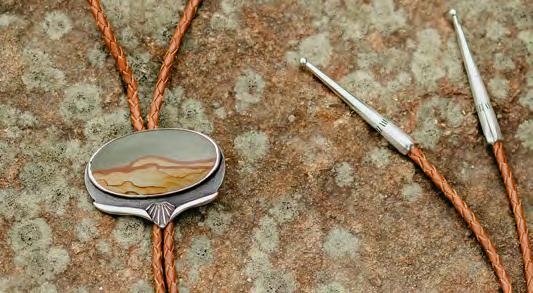
This singular neckwear has oscillated in popularity over the last century, reaching its height in the ’80s and receding in the ’90s. But for true cowboys (and cowgirls and cowfolk), the bolo tie has always been in rotation. It gives new life to a plain shirt, it’s far less complicated than a necktie, and if the concho (that’s the centerpiece) is big enough, it makes for a mic-dropping statement piece.
1. Bullet Bolo Tie, $45 Sureshot Jewelry, Moberly, MO

Channel your inner gunslinger with one of Anne Jensen’s unique bolos, featuring a concho fashioned out of a recycled twelve-gauge shotgun case. The bolo tips are bullet-shaped for a lethal finishing touch. sureshotjewelry.com
2. The Bisbee, $1,295 Jacques Marie Mage, Los Angeles French-born designer Jerome Jacques Marie Mage, the namesake visionary behind his independent luxury eyewear brand, recently teamed up with Milanese menswear designer Umit Benan for a super-limited-edition line of exquisite bolo ties. The Bisbee, featuring a sterling silver concho and tips inlaid with turquoise from Lone Mountain, Nevada, belies a deep appreciation for American lore. Additional designs available at Bergdorf Goodman. jacquesmariemage.com
3. Cripple Creek Jasper Sterling Bolo Tie, $250 Tall Pines Silver, Springfield, MO Indigenous silversmith Desirae Young pays homage to her Hualapai and Havasupai heritage with every piece of handcrafted jewelry. This striking bolo tie features a natural Cripple Creek jasper stone set in sterling silver on locally sourced braided leather. tallpinessilver.com
4. Modern Steel Bolo Tie, $50 Ocean Tides Bolo Ties, Fort Collins, CO

The simple, structural beauty and balance of Kyle Ocean’s bolo ties convey his background in sculpture. This brass bolo is hand-finished, and the color will continue to soften and slightly darken over time. Local pickup available. etsy. com/shop/OceanTidesBoloTiesCO
Howlite Bolo Tie $170 Earthen Vessel, KCMO
Jami Clark’s clean and classic bolo ties embody the timelessness of this accessory. In her home studio, she patiently shapes and scallops brass conchos, inlaying them with carefully selected stones before stringing them
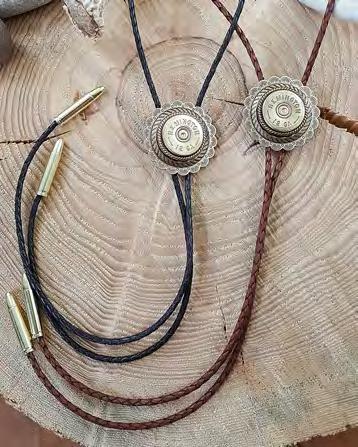
on leather and finishing with her own brass tips. iamearthenvessel.com
Black Braided Bolo Tie, $45 Hide Society, KCMO
Artisan Rachel Ervin focuses primarily on sumptuous handmade leather bags, which she sells via her company Hide Society. Her simple bolo ties–featuring natural braided leather, howlite gem slabs and gold or silver tips–are the perfect introduction to Ervin’s brand. Local pickup available. hidesociety.us
Light Arc Bolo Tie, $45
Tiny Deer Studio, Burbank, CA
Chicana artist Jessica Watkins pulls inspiration in equal parts from vintage design elements and nature. This bright bolo tie features an art decostyle enamel charm around a vegan leather cord with gold-plated tips. tinydeerstudio.com
Ocean Drive Bolo Necklace (Larimer), $95
Glamrocks Jewelry, Phoenix, AZ
Jewelry designer Kristen Davis offers up an elegant and modern take on the Western neckwear with this bolo-cum-necklace, which exchanges the traditional leather cord for fourteen-karat gold or rhodium over brass. There is no adjustable slide—the necklace has a traditional clasp behind the neck—which means the stunning Dominican larimar stone will always be your centerpiece. glamrocksjewelry.com
Crystal Bolo Tie $130
Devon Urquhart, Tacoma, WA
Western tradition and topsy-turvy surrealism collide in artist Devon Urquhart’s bolo ties. She swaps silver centerpieces for intricate handpainted dioramas inlaid with miniature figures and irregular crystals. Available for purchase at the Tacoma Art Museum Store. tamstore.org
Rattlesnake Bolo $180
Heliotrope, Tucson, AZ
Early cowboys lived dangerously, and you can honor that history with this fierce bolo from Heliotrope. Owner and metalsmith Spring Winders takes inspiration from the deserts of her native Arizona. She cast this brass concho in a mold she fashioned from an actual baby diamondback rattlesnake. heliotropemetal.com
Round Teardrop Diamond Bolo Y Necklace, $2,565
Jacquie Aiche, Los Angeles
Creations by L.A.-based fine jewelry designer Jacquie Aiche frequently grace the hands, wrists, ears and necklines of celebrities like Rihanna and Gigi Hadid. Join their ranks with this delicate made-to-order bolo necklace boasting five diamonds—including a scene-stealing teardrop at the center—set in fourteen-karat gold. jacquieaiche.com
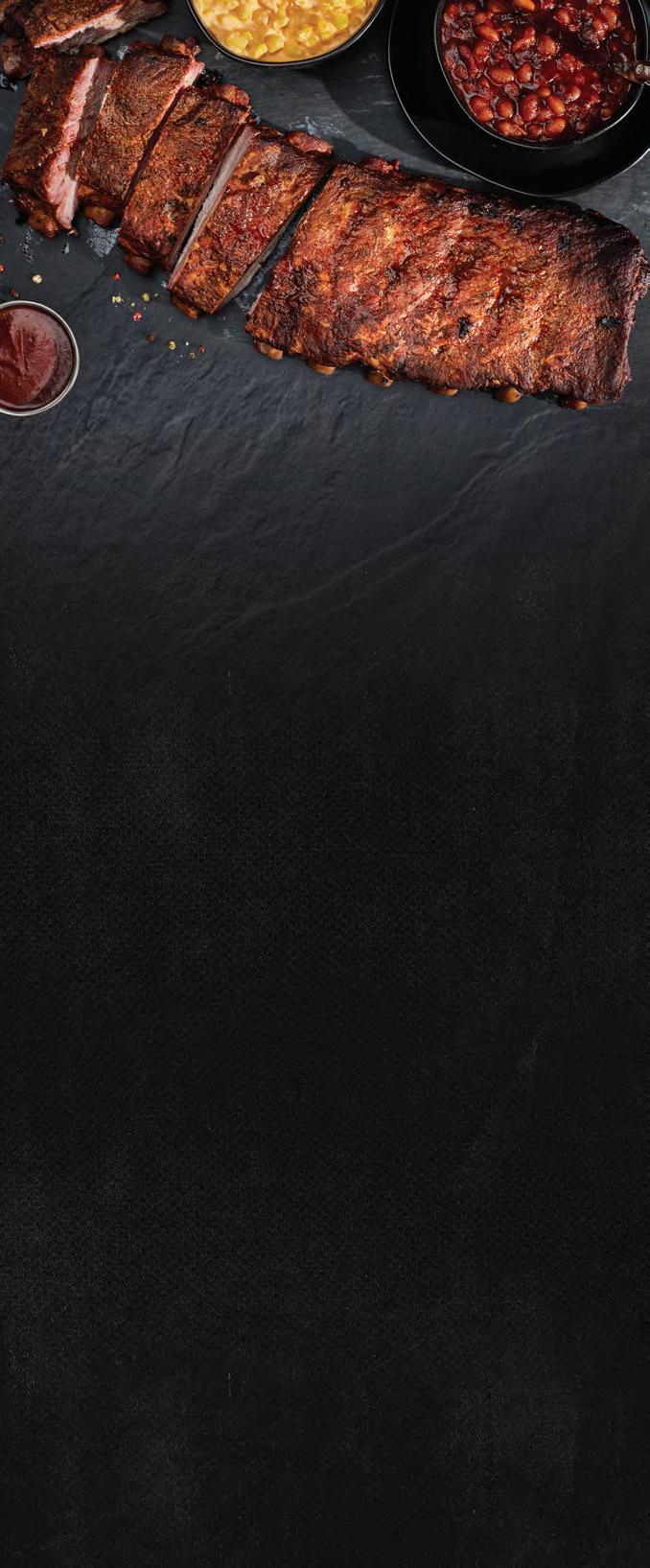



FOR JONATHAN GARVEY, it was a no-brainer to merge fashion and charity. The son of missionaries in Mexico, he always had a giving spirit. After the pandemic hit and impacted so many peoples’ livelihoods, the Garvey family started a nonprofit community kitchen, Feed a Family, which helps provide food to underprivileged communities in Mexico.
Jonathan realized that he had access to unique wool jackets, coats and blankets made on more than one-hundred-year-old foot pedal looms in Tlaxcala, Mexico, with fivehundred-year- old weaving methods. Jonathan was confident these pieces would be a hit with a new market.
Soon after, the Garvey family’s charity began giving away sweaters, too, and the idea for Pancho’s Blanket was born. Jonathan, who earned a degree in entrepreneurship from UMKC, partnered with his brother, Joseph, who still lives in Mexico, to sell the unique jackets and blankets, with a cut of the profit going directly to Feed a Family.
Just a few months after Jonathan opened his first physical store in the Crossroads last fall, we talked to him about the inception of Pancho’s Blanket, the traditional processes that make the clothes so unique and continuing his family’s legacy of charity.

Can you tell us more about how Pancho’s Blanket began? I have this wool coat that a lot of people really like, and they would always comment on it. I decided, ‘I’m going to make these coats one day.’
The artisanry in Mexico is cool and super niche, and most people don’t know about it, so I created a website and started selling [the products]. We were going to trade shows and First Fridays in the Crossroads before opening the store last fall. We still make unique designs and stencils with the artisans and fashion designers in Mexico, and it is a mesh of trendy and artisan. We really wanted to keep it fashionable, but we also wanted to make it in the same way that they’ve made it for hundreds of years.
How would you describe the design process of the products at Pancho’s Blanket? Me and my brother Joseph have designed most of our garments alongside the designers in Mexico. All of the designs are inspired by very common artisan designs— something that you would see a cowboy have on three hundred years ago, that’s how old this style is. We got into just doing slight modifications, experimenting with colors, dying the wool in the artisan way and making the wool on looms that have been used for three generations. We partner with artisans to make things traditional, but then we partner with fashion designers to create really unique stencils that make the designs really pop.
What makes the products at Pancho’s Blanket unique? They are made on looms that are over a hundred years old with five-hundredyear-old methods that the Spanish brought to Mexico. Nowadays, it’s tough to find a jacket that has a modern feel with an antique quality. It is the most unique thing that anyone’s going to have on at any given party. It stands out. The pockets on our T-shirts are hand-loomed in Nicaragua, and then we assemble the fit to be really modern and cool looking with a spark of heritage—every pocket is unique. It’s not just your average T-shirt. Every single product is special and goes to a good cause. Our mission is to keep others warm through fashion, heritage and culture.
Fashion designer Jonathan Garvey talks about his Crossroads’ store, Pancho’s Blanket, and the Mexican traditions he wants to keep alive.










Mamas, do let your babies grow up to be cowboys.
Despite very rough and lawless beginnings, the modern-day cowboy mystique and culture that’s emerged is a blend of rugged individualism, personal honesty and chivalrous behavior.
It’s said that the hazardous work and isolated conditions of early frontier life bred a tradition of self-dependence and the idea that a cowboy or cowgirl must honor their word. One’s promise was of the utmost importance in a vast harsh terrain, with little to no law enforcement. Hence, the birth of Gene Autry’s famous and virtuous Cowboy Code.
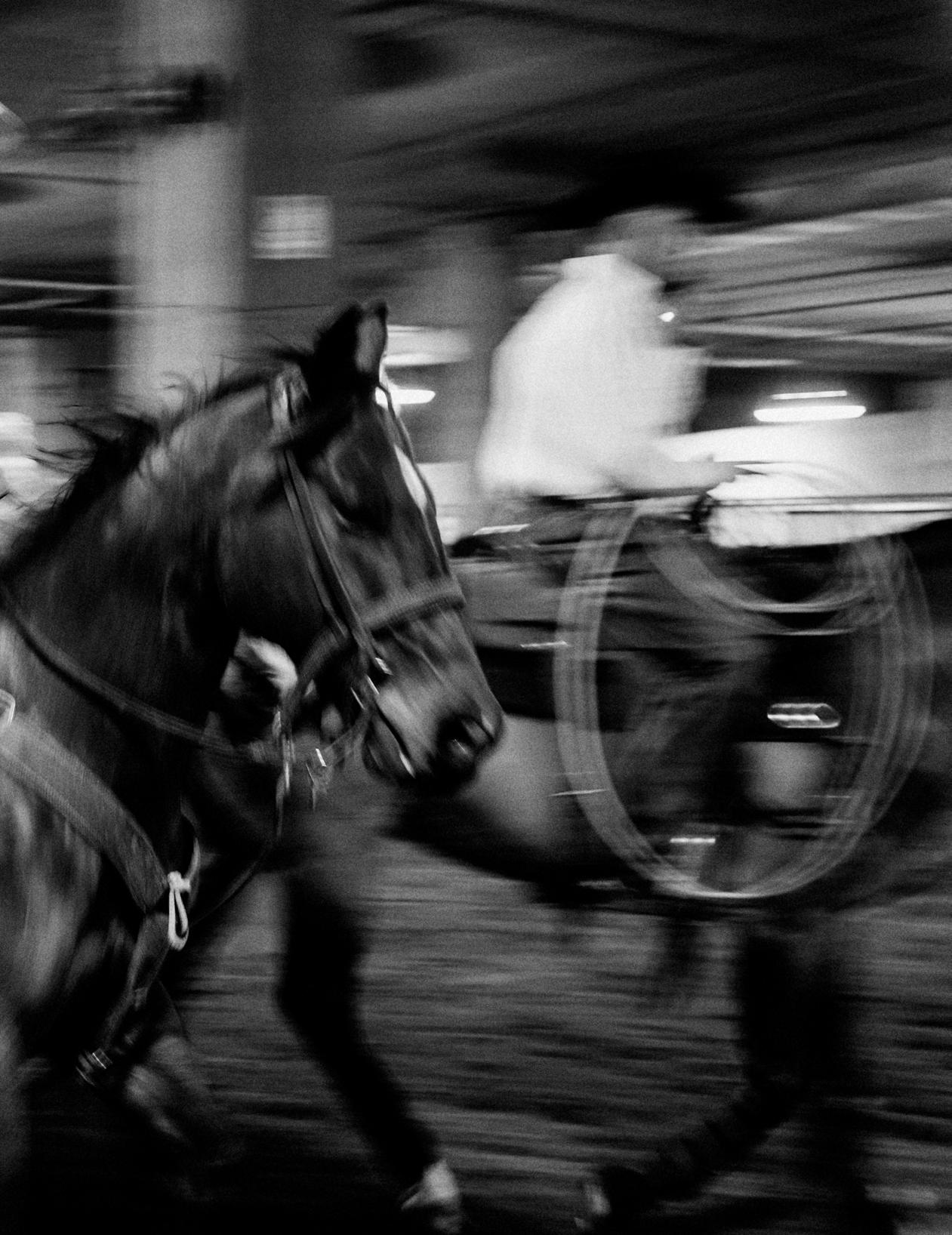
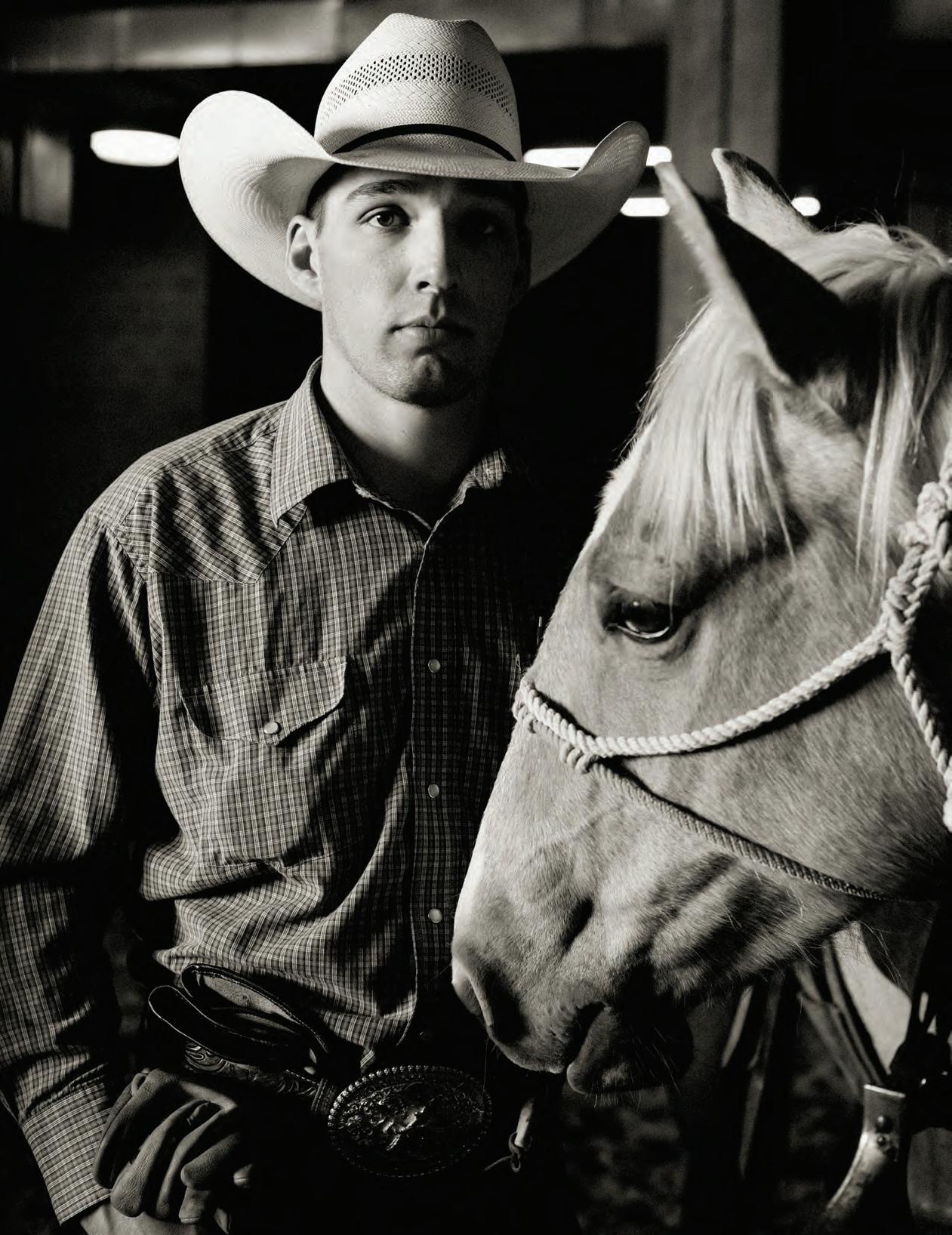
JESS POPE ANSWERS HIS OWN PHONE. This is unusual. Pope is a star athlete. He is one of the best rodeo cowboys on earth.
At just twenty-four years old, Pope won his first world championship for bareback riding along with his third consecutive National Finals Rodeo average title, meaning he finished with the highest combined score. His combined earnings are a shade over a million dollars. So, yeah. He’s good.

It’s weird, then, that he answers his own phone. Baseball players don’t do that. Neither do football players or soccer stars or pretty much any other athlete you can think of. Getting an interview with those guys usually means navigating a vast, prickly phalanx of agents and public relations flacks.
Not Pope. I called. He answered. We meet down at Hale Arena a few days before the American Royal. We stand under the sun, out back in a dusty parking lot, leaning on the bed of his truck.
He is lanky, a smidge under six feet, but seems taller in his well-worn brown leather boots. He wears Rock and Roll Denim jeans and a Panhandle Western Wear shirt, both corporate sponsors. His de rigueur white straw hat adds height, too. At his waist is the gold-plated, diamond-studded NFR belt buckle he won in 2022—rodeo’s equivalent of a Super Bowl ring.
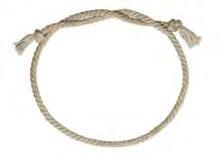
There is another difference between Pope and other pro athletes besides the refreshing accessibility: Not nearly as many people understand what he does. Sure, you might know the basics of bareback riding—namely, try to stay on the horse. But that’s like describing golf as “hitting balls in a hole.” It sounds simple, but greatness demands an incredible amount of talent, work and intellect.
We start, as most interviews do, with the basics. Pope tells me he grew up in Waverly, Kansas, which is only about ninety miles from KC but a culturally different world.
He tells me he got started in rodeo by mutton-busting as a kid, then moving through the ranks. He talks about
his love of space and solitude, how his closest neighbor is more than a mile away and how he likes to spend mornings in silence, listening only to the sounds of nature.
He is, no question, a cowboy. Laconic and unfailingly polite, he walks and speaks with quiet confidence. Paula Cole would be thrilled. It’s impossible for me, a city kid, not to feel hopelessly effete beside him.
He speaks glowingly of the American Royal. “To me it’s very special,” he says. He first came to the event in sixth grade as a steer rider. In high school, he was a saddle bronc and a bareback rider. Now he’s competing with the big boys. “It’s really, really fun to be able to compete this close to home,” he says. “That means so much to me.”
He tells me rodeo has changed from a sport for old school, beer-drinking cowboys to a serious athletic pursuit. Guys today are focused, Pope says. They care about nutrition. They have personal trainers and detailed workout programs.
The conversation explodes into something different, though, when I get Pope to talk about his favorite event. Most sports fans, I say, understand what makes a football or basketball player good. Not so much with rodeo. For the next half hour or so, Pope explains in glorious detail precisely what his discipline requires.
He starts with scouting. Yes, like any other athlete, Pope scouts his opponents. They just happen to weigh fifteen hundred pounds. He tells me how horses are left- or righthanded, just like people, a fact that strikes me as marvelous despite being fairly obvious in retrospect. He says the Professional Rodeo Cowboys Association has stock stats, meaning he can look up whatever horse he’s drawn in the competition and see everybody that’s ever ridden the beast. Then he can go to social media, find video of those other rides and break them down, beat-by-beat.
Then, right there in the parking lot, he does just that. He gets out his phone, shows me a video of one of his own bronc rides and analyzes his process for me, almost frame-by-frame. He explains how he grips the rigging, how his free arm provides balance, how he uses his hips and feet, keeps his chin tucked and how he intuitively feels with his backside what the animal wants to do.
It’s glorious. Imagine listening to Steph Curry dissert on the jump shot or getting George Brett to talk about hitting.
Then, my universe bigger, mind appropriately blown, my appreciation for his sport multiplied by orders of magnitude, Pope says thanks, shakes my hand and walks away. No publicist required.
He is, no question, a cowboy. Laconic and unfailingly polite, he walks and speaks with quiet confidence.

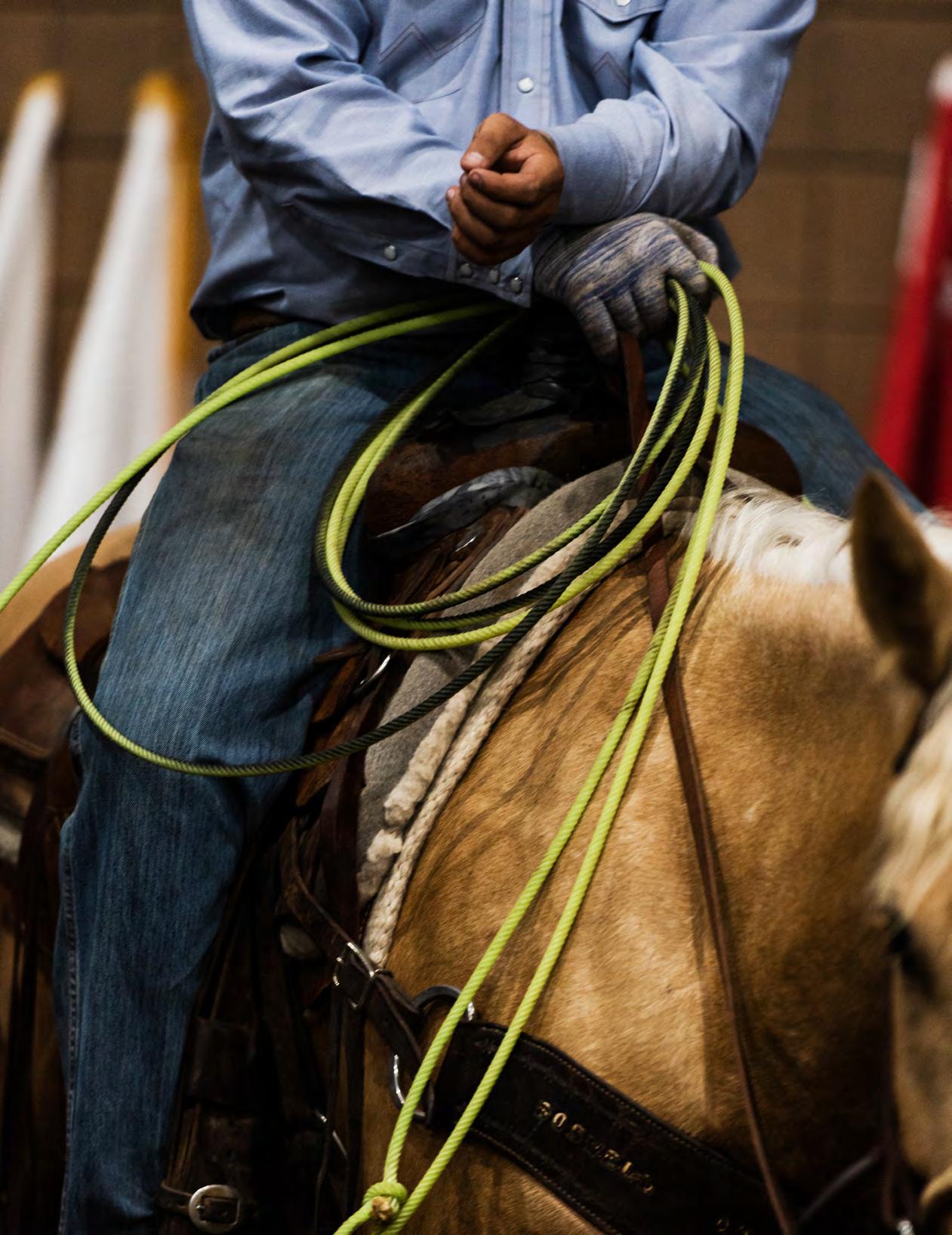
 By Taylor Drummond
By Taylor Drummond

T BEGAN WITH STOCKYARDS in the West Bottoms. What is now known as the American Royal was once just dirt-covered fields thick with an overwhelming smell of livestock that could be carried for miles by the strong midwestern winds.
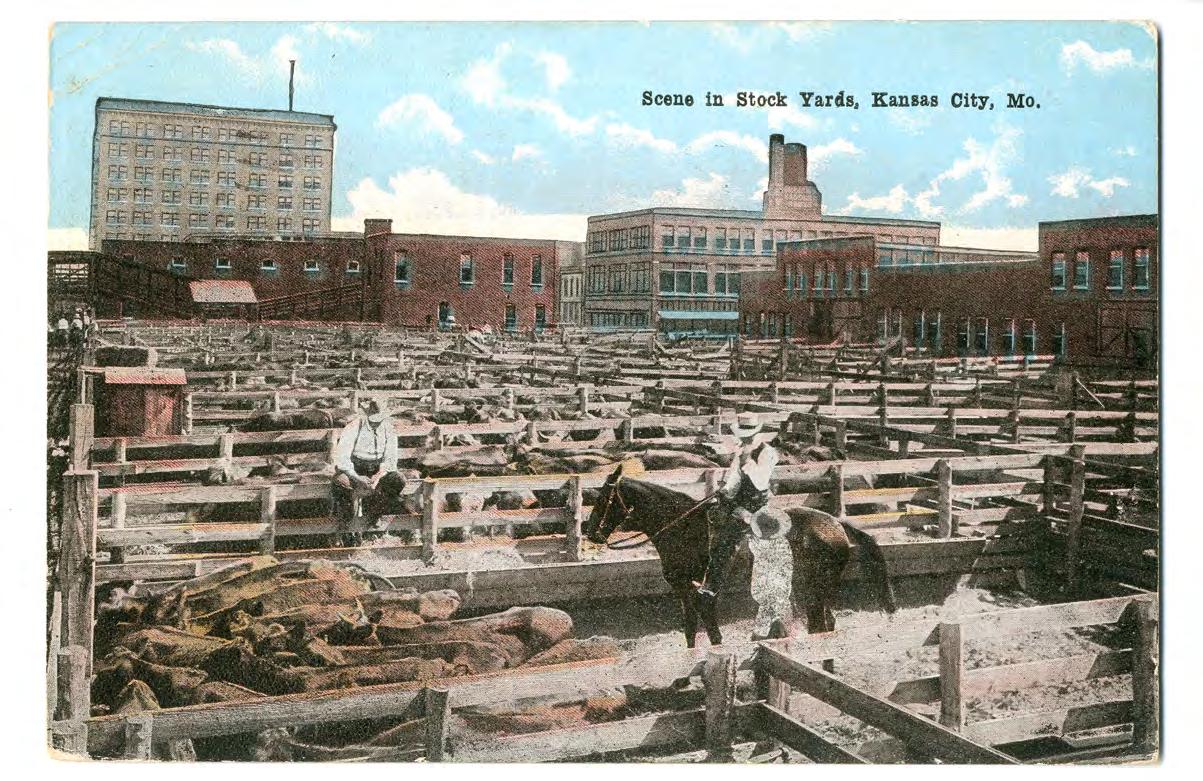
In 1871 on the Missouri side of the Kansas River, along the Kansas Pacific and Missouri Pacific railroad tracks, the Kansas City stockyards opened. With nearly a hundred thousand residents, it was a time when there were more Hereford cattle than people in the city.
Later called the Kansas City Livestock Exchange, the stockyards quickly became the epicenter of the Midwest’s cattle industry. But it was more than just a high-traffic cattle market: The stockyards fueled KC’s population growth. As a result of the booming cattle industry, thousands of people were employed, and more businesses were attracted to the city, including meatpacking plants and wholesale grocery stores.

It was in 1899 when the stockyards struck gold. The Livestock Exchange joined forces with what was known as the National Hereford Show, the first nationwide purebred cattle show.
More than five hundred registered Herefords were at the auction, and three hundred sold for more than $334 on average. An estimated fifty-five thousand people attended the event held in a tent right in the stockyard.
“The stockyard provided opportunities for cattle producers to exhibit our livestock,” says Nathan Laudan, director of education at the American Royal Association. “They were our magnet for creating our first livestock show.”
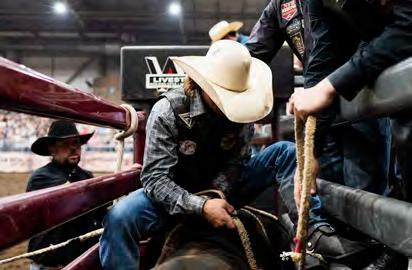
With each passing year, The National Hereford Cattle Show expanded beyond its original meager circus-like tent in the stockyard, continuing to feature hundreds of heads of cattle each year.
No longer fitting its original name, the Livestock Exchange was renamed the American Royal in 1902, thanks to C.F. Curtiss, then the dean of agriculture at Iowa State College of Agriculture, who compared the exchange to the British Royal Agricultural Show. Much like Kansas City’s population then, the show was growing with great speed, with additions such as a horse show.

“We credit the founding of the horse show to Tom Bass,” Laudan says. “Bass, who was born a slave and died a free man in Missouri, was not only the inventor of the Bass Bit, which is still used today, and a prominent horse trainer, but he was the first to see the crowds at the American Royal and say, ‘Hey, there is a need for a
horse show here.’” From then on, it would be known as the The American Royal Livestock and Horse Show, which positively changed the dynamic of the event forever.
It wasn’t until years later that the American Royal Association and the Kansas City Stockyards would invest in a permanent structure. Built in the stockyards, the building was deemed to be the American Royal’s first official home. At the time, the twenty-six thousand square-foot property seemed a source of astonishment. It was a manmade creation that sought to advance the livestock industry beyond what was thought possible.
“The new building was a revelation to those who visited it for the first time and who had no idea that there had been constructed here an arena building of such dimensions and capacity for bigger affairs than a convention hall could accommodate, with acres and acres of unbroken floor space in addition to the most modern arena building in the country,”

a November 1922 edition of the Kansas Citian stated. This was one of many paragraphs lauding the American Royal’s first permanent structure.
The building was massive and cutting-edge for its time, offering an unparalleled experience for equestrian and entertainment events. By this time, the stockyards’ popularity ensured that the American Royal would continue to be a success as it became vital to the livestock industry’s future.

Events have been added over the years, including the American Royal’s first rodeo in 1949. For more than one hundred years, the American Royal has remained an untouched Kansas City tradition.





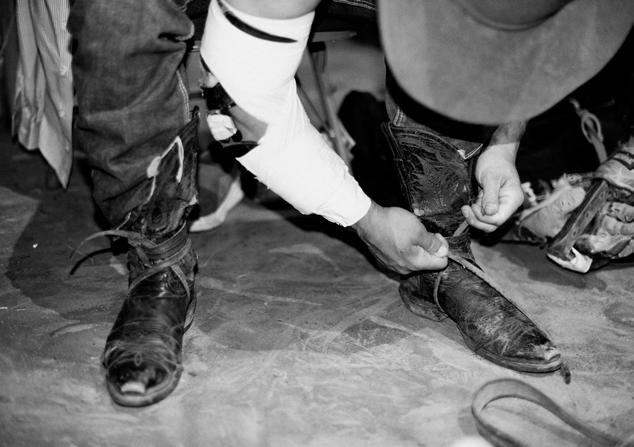

The first American Royal Barbecue competition was held in 1980. “It started as a fundraiser and to this day is the largest fundraiser that the American Royal holds,” Laudan says. “It was an opportunity to showcase Kansas City barbecue, and once the Kansas City Barbeque Society formed in 1986 and sanctioned the American Royal Barbecue competition, it quickly added a lot of credibility to what we were doing.”
By 1998, it was deemed “The World’s Largest Barbecue,” with more than three hundred teams competing yearly.
As 2012 American Royal Barbecue Hall of Fame Inductee and Kansas City Barbeque Society founder Carolyn Wells quips, “Blood makes you related, but barbecue makes you family.”
This is a truth that can be seen every year at the American Royal Barbeque Competition, as hundreds compete for the Grand Champion title with their own finger-licking, fall-off-thebone barbeque—a tradition that would make Henry Perry, credited with being the first person to open a barbecue restaurant in KC, proud.
From rodeos to livestock markets and more, the institution only strengthened each passing year.

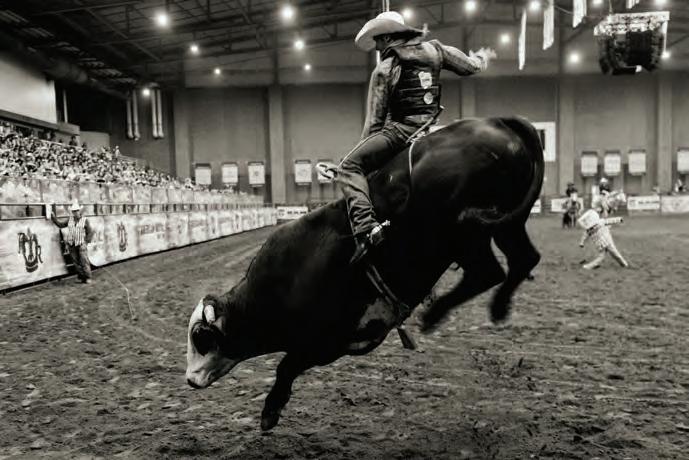
As noted in the publication 75 Years of Kansas City Livestock Market History, the Kansas City Stockyard Company refers to the American Royal as the “educational extension department of the Kansas City market and the Kansas City Stockyards Company.” Through its events and programs, the American Royal reaches hundreds of thousands of people each year as well as granting scholarships for people seeking an agricultural education.
Much like in the early 1920s, with the vision and drive to succeed within every facet of their organization, the American Royal Association continues to grow and is building a new home farther west in Kansas City, Kansas. The American Royal website says the new facility will be a "state-of-the-art agriculture showcase and learning environment unlike any other. This is more than a relocation. It’s more than bigger facilities. It’s about establishing the revitalized American Royal as the go-to place for food and agriculture.”
With plans to move from the original location on Genessee and Wyoming streets to the western side of Kansas City, Kansas, the new home will sit on more than one hundred acres. But while the location will change, the tradition and history remains. “Without the stockyards, we wouldn’t be who we are today,” Laudan says.
“This is more than a relocation. It’s more than bigger facilities. It’s about establishing the revitalized American Royal as the go-to place for food and agriculture.”
WHEN TRAE Q L VENERABLE gets to the barn, he immediately texts his wife, Jasmine, to let her know that he’s getting started. Then he slides his iPhone in his back pocket and leaves the world behind. He greets Stormy, his two-year-old filly, with a tip of his hat and a low murmur. It’ll be at least three hours before he feels a faint buzz through his denim, the world calling him back.
Time evaporates when he’s working horses, Venerable has noticed. He can’t help it. He is a born cowboy, comes from a long line of cowboys, knows horses like he knows his own face.

“There’s something really God-given from a horse, and knowing that is the core of being a horseman, a cowboy,” he says. “If you can train a horse, there’s not a lot of things in life you can’t do.”
Venerable has an easy confidence about him, an unhurried, earnest, Johnny Cash-like vibe. When we meet, he wears stylish thick-framed glasses, dusty black jeans and a black T-shirt. He is missing the archetypal accessories. There is no wide-brimmed Stetson, no pointy-toed boots, no engraved belt buckle or bolo tie. And yet he is every inch the cowboy.
"My family was cowboying before it was cool,” he says with a wry grin.
He means it. His forebears were slaves who homesteaded in southern Missouri and Kansas after the Civil War. Back then, cowboying was among the few opportunities afforded to freed Blacks. Historians estimate that at least one in four cowboys were Black, though the true percentage is likely higher.
“I remember reading a Rolling Stone article a few years ago [in 2019], when Lil Nas X released that song ‘Old Town Road,’” Venerable says. “It talked about how everyone wants to be a cowboy, but no one really knows what it means.”
It was the first time in recent history that Venerable could recall a conversation about Black cowboys taking place on a national level, and he was glad for that. One year earlier, Venerable released Notables from the West, the first book in his children’s series called “Grandpa, I
Just Want to be a Cowboy.” In the book, readers learn along with protagonist Bo about the legacy of Black cowboys from Bo’s Grandpa Leroy. Venerable has released two more books in the series since then and has embarked on six book tours to elementary schools, where he tells the story of the Black cowboys that history forgot. He focuses particularly on the lower Midwest.
“There is a history of cowboying in Kansas City, on both sides of State Line, and there are still quite a few riding clubs,” Venerable says. (His great-uncle, DA, founded a Black saddle club called the Walkers in Olathe.)
Venerable is right: You can’t have a cowtown without cowboys. The Kansas City Stockyards opened in 1871, making Kansas City a pivotal stopping point along the Union Pacific Railroad (then the Kansas Pacific). More than 167,000 head of cattle passed through the Stockyards in its first year, a figure that doubled over the next two years. The convergence of the Stockyards, the emerging railroad lines and the post-Civil War demand for beef provided Kansas City with a booming industry. The city grew at more than double the national average, and in 1899, when the American Royal Agricultural Show launched—thanks in large part to the work of Tom Bass, a Black cowboy and legendary horse trainer—its population was around 160,000. Less than four decades earlier, in 1860, Kansas City counted just 6,000 residents. None of this could have been done without Black cowboys.
Venerable boards Stormy at Hackberry Farms in Kansas City, Missouri. Like most Tennessee Walking horses, she is long and lean, with a graceful neck and powerful hind quarters. Venerable visits her every day. She is almost broken—that is, ready to ride. Venerable has gotten her used to wearing a saddle, but she’s not quite ready for anyone to sit in it.
“You’re breaking the horse’s will so that they submit to yours—that’s the old cowboy way to say it,” Venerable says. But it has less to do with cowboy power trips and more with responsible horse training. “If you get off while they’re doing something crazy, you just taught this horse that they can do that.”
Stormy’s head looms over Venerable’s by a good six inches. Her rich chocolate coat is taut over her muscles, gleaming when light catches it, and there is not one hair out of place in her dark mane.
“Stormy is between eight hundred and nine hundred pounds,” Venerable offers. “She could kill me. You never push a horse to do anything—you ask them. You learn to speak their language. When I’m working with Stormy, I can tell she wants to please me. And there’s nothing in this world like that feeling when your horse understands on your level what you’re asking them to do.”
Stormy is the only horse Venerable owns outright. DA, the great-uncle who passed on the family’s cowboy tradition, keeps a handful of broodmares at his farm in Spring Hill, Kansas, and Venerable also helps with them. Venerable intends for Stormy to be a trail horse used for pleasure riding, though he does hope to show her at
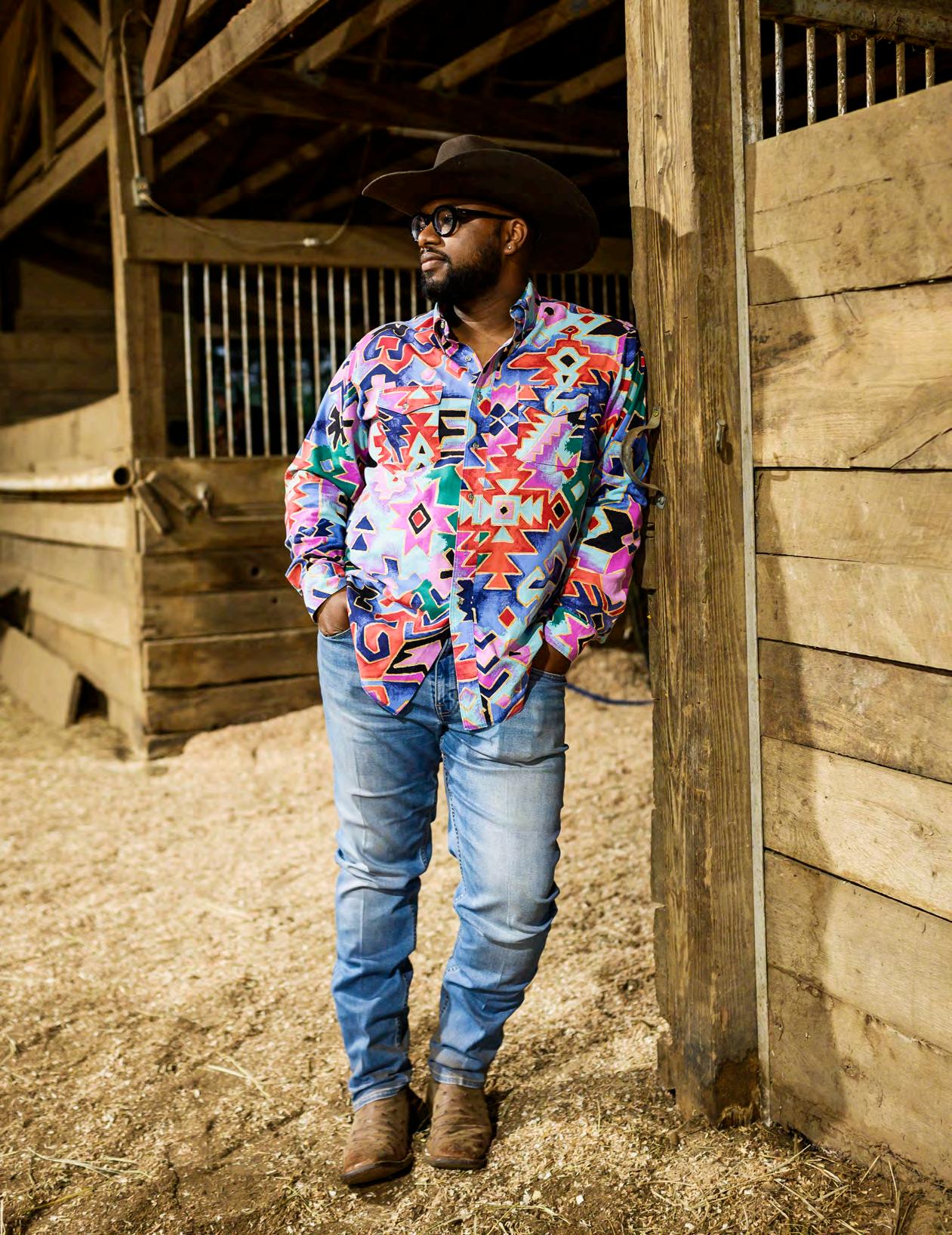
“There’s something really God-given from a horse, and knowing that is the core of being a horseman, a cowboy. If you can train a horse, there’s not a lot of things in life you can’t do.”

The job was far from glamorous: Cowboys spent most of their fifteen-hour-plus days in the saddle, rounding up cattle and driving them to towns along the railway line in Missouri, Kansas and Colorado. In the era of Westward Expansion, this meant traversing bleak trails and grappling with the unrelenting landscape, from its wolves and mountain lions to perilous river crossings and violent storms that increased the risk of stampedes.
Every day looks a little different for a modern horseman, Venerable says, and the work depends on the season. In the summer, you can wait until after sunup to head to the barn and turn the horses out. The horses need to be fed, and some–especially show horses–require a special diet or medication. Farm chores like mucking and cleaning stalls are next, then training or exercise. There’s another round of feed in the evening, and your day is over by eight or nine. “It sounds easy if you’ve got just one horse, but if you have thirty horses, it’s all day,” Venerable says.
the American Royal. This work, along with the book writing and touring, is in addition to his career as an engineer at Honeywell.
“I’m a hybrid cowboy–that’s what DA always told me, because I don’t live on an operation,” Venerable says. “My dad called me an urban cowboy. But if you want to look at it from a horseman standpoint, the horses come and go. DA has had many horses over the years. There are seasons where there is lots of breeding, lots of selling, lots of training. Right now, I’m low on horses, but it all depends.”
In Hartville, Missouri, Venerable’s cousins maintain a sizable livestock operation. Horses are a key part of it, but for that side of his family, the business is beef. “They’re cattlemen,” Venerable says.
That the family uses any horses to manage the herd is notable. Since the decline of horse-drawn farming, the cattle industry is one of the few left that employ horses—though plenty of operations are replacing them with ATVs.
“A four-wheeler just takes gas, while a horse will cost you every day of your life. Think about the maintenance, vet bills, equipment, shots,” Venerable says. “I was raised knowing that the amount of money you pay for a horse, the lump sum you hand over at the beginning, is the cheapest part. And that number could be $10,000 or more.”
Cowboying today ain’t cheap, and it’s hard to earn a living doing it, too. A horseman can make money from breeding, and breeders can sell horse semen for unholy sums, but it usually takes a championship horse to bring the bank. Venerable jokes that flushing a $100 bill down the toilet would be a better investment—and far less work—than getting into horses.
But he was born into it. He’ll never be without at least one horse. And who knows: At twenty-eight years old, Venerable has plenty of time to decide if he wants to shake off the “urban.” There is plenty of acreage in the family, and land is critical to horsemanship, too.
Venerable has a fourth children’s book, Let ’Em Walk On, due out this year. He shares some of his story with the kids he visits on his book tours, but he isn’t trying to inspire a new generation of cowboys.
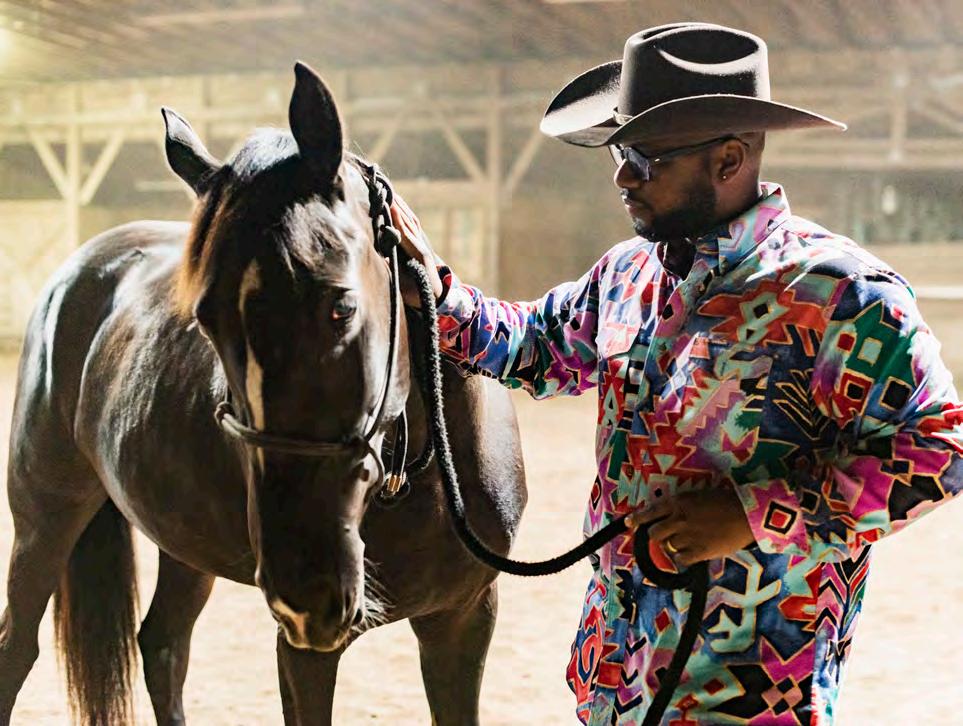
Venerable is a preservationist: With so little Black representation in history books, he wants kids— especially youths of color—to know that there is more to their story.
“If you don’t know where you’re from, you don’t know where you’re going,” he says, paraphrasing Maya Angelou. “I want to let Black and brown kids know that they don’t have to play ball or write music. I want them to know that they have been cowboys, that this is in their blood, too. I hope it helps them shape their own narrative.”
Live out your Yellowstone fantasies with one of these cowboy-cations.
By Nicole KinningItching to get away from the hustle of everyday life? Want to know what a true farm-to-table meal tastes like? Ready to be awoken by a rooster crow instead of your phone’s alarm? Consider taking a cowboy-cation. Cowboy-cations, which are also known as agrotourism, are a growing trend of combining travel with handson experiences in rural areas (think of it like playing a farm simulation game, but real life). There are a plethora of cowboy-cations just a few hours’ drive from Kansas City, so saddle up!
4. THE SILOS AT PRAIRIE VALE GREEN RIDGE, MO
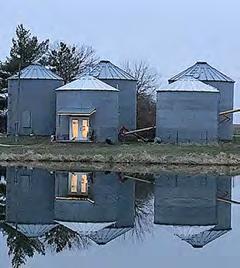
Stay in a silo—yes, you heard us right—at an old dairy farm right outside of Green Ridge. Despite the rustic attitude of the farm, the converted silo cabins are modern and cozy. Help the farming host family tend to chickens, goats, cows and cats, or hop on your bike and hit the nearby Katy Trail. thesilosatprairievale.com.
5. CLOVER CLIFF RANCH ELMDALE, KS
1. RIVER OF LIFE FARM DORA, MO
Lodge above the foliage in this beautiful treehouse at River of Life Farm. This tranquil spot is ideal if you’re itching to cast a reel; the cabin sits along the North Fork River, which is deemed one of the best reproducing trout streams in the U.S. by several pro anglers, including Walt Fulps of the Missouri Trout Hunter blog. riveroflifefarm.com.

Tucked into the Flint Hills sits Clover Cliff Ranch, an off-the-beatenpath bed and breakfast that looks straight out of the nineteenth century. When not admiring the antique furniture and architecture, explore the farm by horseback. This ranch also has rich agricultural history: The home’s original owner, J.R. Blackshere, raised the first successful Kansas alfalfa crop and introduced black Galloway cattle (a Scottish breed known for thick curly hair that can withstand winters) to Chase County. clovercliffranch.com.
6. T-BAR RANCH GOODLAND, KS
Known for its abundant bird hunting opportunities, this twenty thousand-acre cattle farm is located in the northwest corner of Kansas. Lodging options include the cozy cottage on the ranch, which can host up to ten guests, or the bunkhouse on property, which can sleep up to four. t-barranch.com.




Think of Weber Farm as Missouri’s version of the picturesque farm home in the Field of Dreams. This quaint Airbnb on the east side of Missouri is the perfect farm life cosplay. Porch swing? Check. Chicken feeding? Check. Antique hand-carved wood furniture and vintage farm tools strewn throughout the homestead? Check. airbnb.com.
7. BUTTERFIELD TRAIL BUNKHOUSE WAKEENEY, KS
The Butterfield Trail Bunkhouse is exactly what the name insinuates: The bed and breakfast is set in the bunkhouse of a working farm. This farm is a ways off the beaten path, so it’s a great opportunity to relax and stargaze—with the background music of cow moos, of course. butterfieldtrailbunkhouse.com.
8. BLUE RIVER FOREST EXPERIENCE
About twenty minutes from Silver Dollar City, you’ll find one of the coolest glamping experiences in the Ozarks. These yurts were designed by William Coperthewaite, who pioneered yurt-building in the United States, and the hosts put on events throughout the season, like permaculture classes and foraging dinners. forestgardenyurts.com.
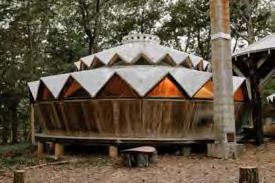
OVERLAND PARK, KS

You may not realize it, but some of the coolest nature adventures in Kansas are right in your backyard. The Blue River Forest Experience is an organization that specializes in forest-filled activities, from forest tea parties and campfire nights to foraging workshops and yoga classes. blueriverforestexperience.org.
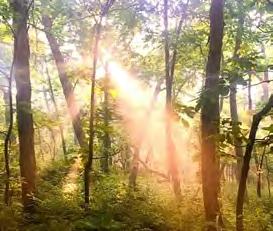 2. THE WEBER FARM FROHNA, MO
3. FOREST GARDEN YURTS REEDS SPRING, MO
1.
2.
4.
3.
5.
6.
7.
2. THE WEBER FARM FROHNA, MO
3. FOREST GARDEN YURTS REEDS SPRING, MO
1.
2.
4.
3.
5.
6.
7.
Missouri and Kansas are dotted with famous and not-sofamous spots of historical significance to America’s great westward expansion. Kansas City and its environs were a strategic starting point for many seeking opportunity and heading west to manifest their own destinies.
Following the U.S. Civil War, the recently opened western country provided a sense of opportunity and hope for many newly freed slaves. While many freedmen fled to the rapidly growing cities of the northeast, some smaller groups, like the Exodusters, opted for life on the Kansas prairie instead.
At this time, Kansas had earned an association with the earlier abolitionist movement and free-state heroes like John Brown. And for some groups like the Exodusters, Kansas was seen as their promised land.
In 1877, a group consisting mostly of former slaves from Kentucky established a small western-Kansas town on the northern bank of the Solomon River and named it Nicodemus. While the settlers of this town were not by definition Exodusters, they did share the same hopes and dreams of opportunity on the Kansas prairie, and they also faced many of the same challenges.
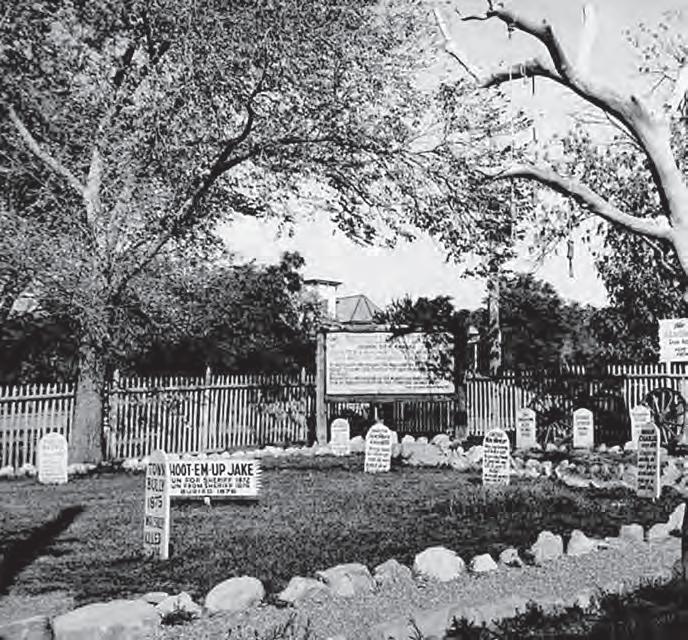

Although Nicodemus did experience a brief period of growth, small-scale farming in the semi-arid Kansas uplands proved too difficult for many of these pioneers who often came without the resources to operate farms long-term. This, coupled with the failure to attract a major railroad line to the town, led to Nicodemus’s steady decline by the end of the nineteenth century.
Today, Nicodemus is a designated National Historic Site. It has a bookstore and museum and is home to a population of about fourteen.


There is perhaps no town in Kansas that better exemplifies the state’s Wild West roots than Dodge City, once dubbed “Hell on the Plains.”
An important stop for pioneers on their journey west, the town was a hub for buffalo hunters, cowboys and gunslingers and all the depravity and lawlessness that came with them. The streets, often lined with buffalo hide ready for market, were a frequent spot for gun fights. Saloons and brothels were staples of the local economy, offering a steady source of entertainment for the raucous cattle drivers that came into town.
The lawlessness became so bad that legendary lawman Wyatt Earp was brought in to restore order. Lawlessness slowly faded from the town, along with its primary economic mainstay: cattle.
In an effort to control the infectious diseases that often accompanied cattle coming up from Texas, the Kansas State legislature all but banned the cattle drives throughout the state, so the cowboys set their sights further west. They took their cows, guns and vices and got the “hell out of Dodge.” Over the next one hundred and fifty years, Dodge City grew into the typical western Kansas town as we know it today.
From 1859 to 1933, Independence had the honor of playing host to Jackson County’s population of incarcerated scoundrels and ne’er-do-wells.
Now a tourist attraction, the 1859 Jail Museum once housed countless local and Civil War military criminals within its thick limestone walls. Perhaps the most prominent prisoner was Frank James, the brother of the metro’s most infamous Wild West outlaw, Jesse James.
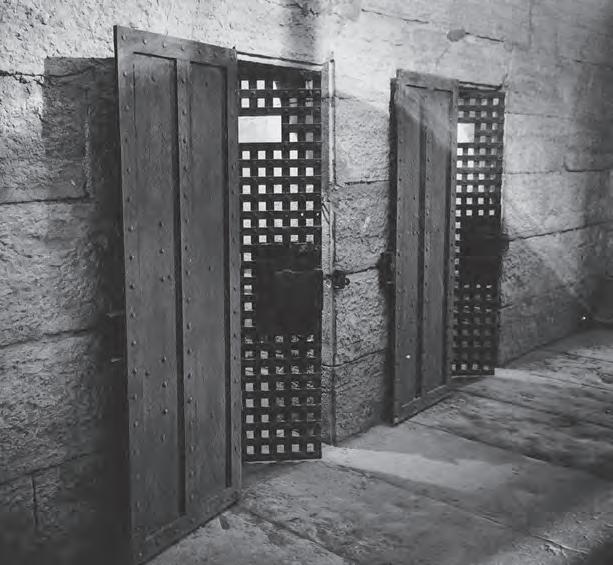
Frank called the jail home for six months in 1882, during which time he enjoyed such fineries as carpets, furnishings and artwork and enjoyed privileges like freely roaming the jail and hosting card games in his cell after dark.
A long way from its time as a jail, today the building houses a history museum open for tours where visitors can visit Frank James’s decked-out cell.


First established as regiments for Black cavalry soldiers following the Civil War, the Buffalo Soldiers not only served in several U.S. conflicts but also played an integral role in the protection of westward travelers and pioneers on the great frontier.
The Buffalo Soldiers built and assisted in the development of various kinds of infrastructure including roads, forts, telegraph lines, railroads and wagon trains.
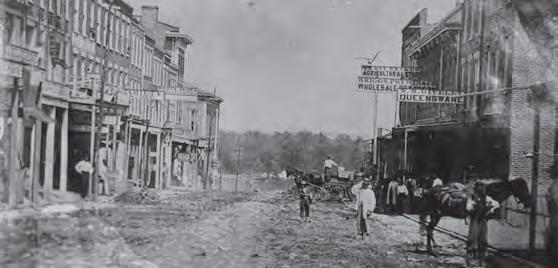
The Wild West was a hostile country, and United States authorities could not have ensured security for those pioneers had it not been for the contributions of the Buffalo Soldiers. Today, a monument to the 9th and 10th Cavalry Regiments of the U.S. Army can be visited in Fort Leavenworth, Kansas, the home of the Buffalo Soldiers.
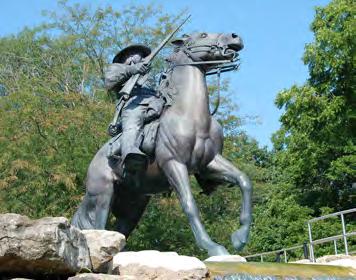
The rapid westward expansion of the United States brought with it a number of logistical challenges during a time of still-early industrialization. Where the treacherous Rocky Mountains and defensive Native Americans posed perilous obstacles for transportation of goods and people, the complete absence of settlement and infrastructure made communication nearly impossible.
Three prominent Missouri businessmen already involved in the western shipping and freight industry created the now-famous Pony Express to help move mail across the new territory.

A team of eighty riders carried mail between one hundred and ninety stations spaced out about ten miles apart between St. Joseph, Missouri, and Sacramento, California. At each station, a rider would switch to a fresh horse and continue on his journey across the untamed expanse of the Wild West. This system allowed mail to travel between Missouri and California in a record-breaking ten day period. The horses, while not exactly ponies, were small and zippy, as were their riders, young boys who could not exceed one hundred and twenty-five pounds. One of these little cowboys went on to become legendary Wild West showman William “Buffalo Bill’’ Cody.
While the company’s brief eighteen months of operations ceased with the advent of the first transcontinental telegraph system in 1861, the mythos of the Pony Express had already been interwoven into the fabric of Western legend and lore.
Today, the Pony Express National Museum is housed in the old Pony Express Stables in St. Joseph, where the first rider set out in 1860.
The city was often the last stop before venturing into the great unsettled expanse of the prairies—a place where men could rest, wet their whistles, win (or lose) some money gambling, gather supplies and enjoy a hearty meal and perhaps the company of a young lady.
The neighborhood now known as the River Market and home to many young professionals was once this city’s very own red light district. In the late nineteenth century, a walk down Third Street would have offered a glance of women standing on wooden-planked sidewalks donning colorful dresses in front of a promenade of bustling bordellos.
The most infamous of these establishments was that of one Miss Annie Chambers, Kansas City’s most prominent madame. Miss Chambers operated a twenty-five-room luxury “resort” at Third and Wyandotte from the 1870s until the 1910s, when the city began its widespread moral clean-up effort, and establishments like that of Miss Chambers faded into the dark recesses of KC’s past.
YOU CAN CALL HIM “CLOWN.” Because he amuses you.
Before meeting John Harrison, I was told that the current, correct term for his job is “entertainer.” That, however, isn’t how he introduces himself.
“John Harrison, rodeo clown and barrel-man,” he says.
“I didn’t think we called them clowns anymore?” I ask.
He answers in an easy Oklahoma drawl. “Well, you know, some people get offended by it.” There are people, he tells me, who prefer terms like entertainers and athletes. “But some of the best rodeo clowns in this world that I grew up watching were some of the best athletes in the world. They were called clowns, and they were pretty damn good at their job.”
So is Harrison. As good as it gets, really.
Last year, he was honored with three huge industry awards. He won Comedy Act of the Year for the second time, the Coors Man in the Can for the fifth time, and his first Clown/Barrelman of the Year award. Only two other guys have ever won all three in the same year.
Harrison describes himself as “blessed,” though others might add “smart,” “talented” and “hard-working.”
He comes by it honest. The grandson of legendary bull rider Freckles Brown, Harrison began his career twenty years ago as a trick rider, only later adding barrelman and clowning to his repertoire.
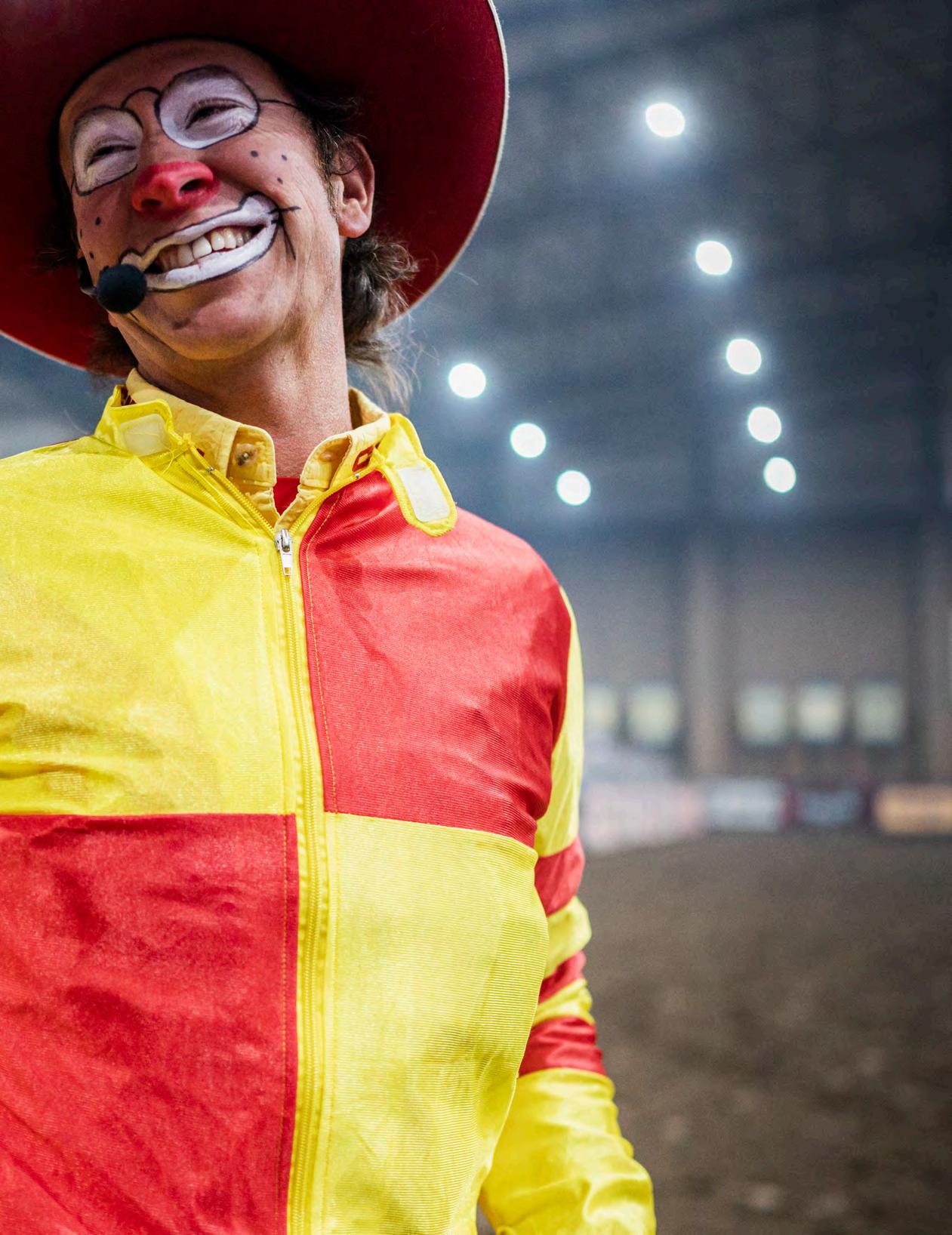
Plenty of pain has come with his success, of course. “If you’re in the arena, messing with large farm animals, eventually you’re going to get hurt,” he says. He’s had two knee surgeries, a shoulder surgery and a compressed disc in his neck, and he’s got an upcoming hip replacement. This for a man of forty-four.
None of that mileage was evident at the American Royal, though, where Harrison pranced, strutted and lept around like a kid. Beyond dodging bulls in his padded barrel, he did an enormous amount of homespun crowd work. He bantered with announcer Garrett Yerigan. He jumped into the bleachers for fan interactions. He ran a silly mock Kentucky Derby. He dropped a Kid Rock reference. There was an extended riff on chocolate-covered strawberries. At one point, he traded hats with a lady in the crowd. When she blanched on realizing how sweaty his cap was, Harrison, quick as a whip, asked if she wanted to trade shoes, too.
Throughout the night, above all else, he was intensely and utterly fun. Fun, after all, is the essence of the job. And whatever you may prefer to call that job, he just might be the best in the world at doing it.

Not sure if cowboys back in the day ate biscuit French toast with honey butter and fruit compote or a sandwich called The Tomahawk, a nap-inducing dish made with biscuits, a sausage patty, scrambled eggs, cheddar cheese, and strawberry and rhubarb jam, but it all sounds delicious. This Westport eatery has the right name, Atomic Cowboy, and a fitting campy neon cowgirl sign on its wall to boot.
GO: 4144 Pennsylvania Ave., KCMO.
If you want a place to guzzle a drink, ride a mechanical bull and listen to live western or southern rock bands, Big Sky in the Power and Light District is the place to go. In the heart of KC, and definitely not a hidden gem, it attracts all types of folks wanting to live out their western fantasies.
GO: 111 E. 13th St., KCMO.
If you want to Applejack and Ankle Rock—or you want to learn how to alongside other line dance enthusiasts—head to Guitars and Cadillacs in Overland Park. Despite its deceiving strip mall location, the live country music venue gives off a true country western vibe. Below a glittering disco ball shaped as a horse saddle high above the dance floor, you can learn a few classic dances such as the Cowboy Boogie, Walkin Wazior or something completely new. An instructor is on hand to teach and lead on Wednesday, Thursday and Friday nights between 7 and 8 p.m. There are two spots to listen to live country western music, too, as well as several pool tables and bars

GO: 7312 W. 119th St., Overland Park.


If you want to be a cowgirl or cowboy but aren’t sure where to start, we have a few ideas. To show off the latest in local Wild West-inspired apparel, we headed to PBR Big Sky, a country western bar with a mechanical bull in the Power and Light District.

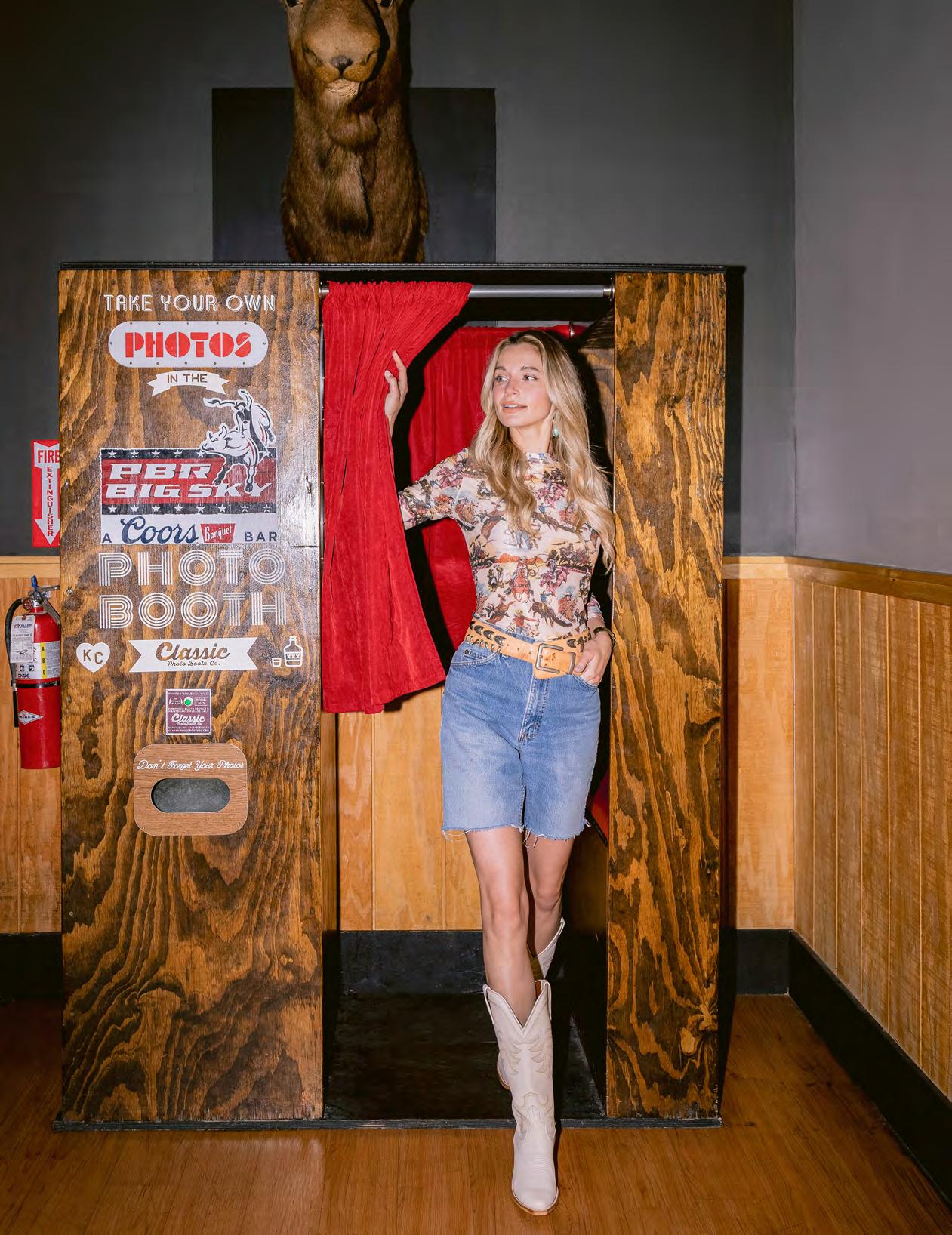

 Above: Quinn’s wardrobe is from Nigro’s Western Store No.1; jewelry from highdesertturquoise.com.
Right: Killen’s hat is from Nigro’s Western Store No. 1; chaps and boots from bonebasics.com; jewelry from highdesertturquoise.com.
Above: Quinn’s wardrobe is from Nigro’s Western Store No.1; jewelry from highdesertturquoise.com.
Right: Killen’s hat is from Nigro’s Western Store No. 1; chaps and boots from bonebasics.com; jewelry from highdesertturquoise.com.
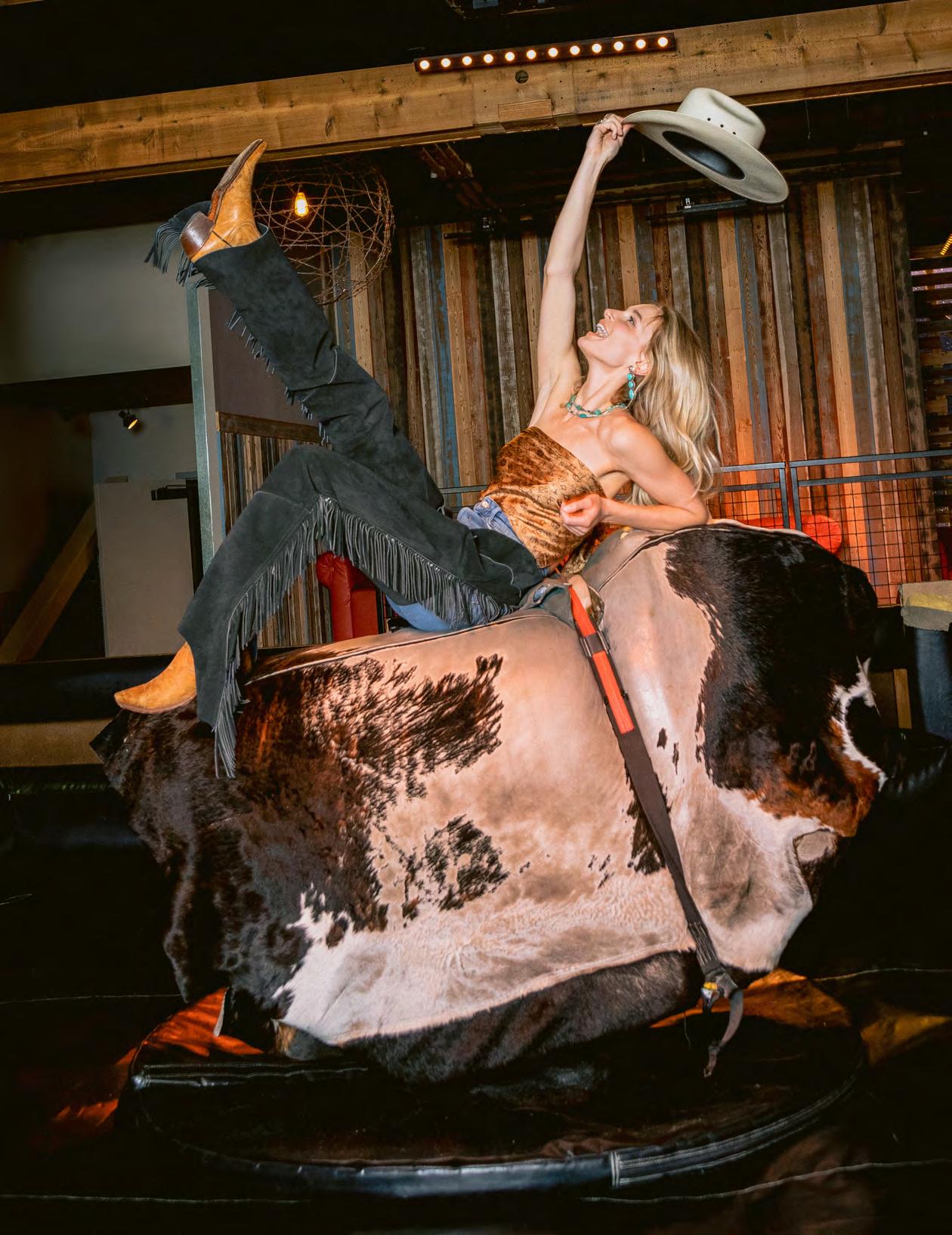
There’s no need to settle for less in retirement when you can indulge in a future filled with exquisite living spaces, first-class amenities and gourmet cuisine. You’ll feel like you’re residing in a hotel. Our upscale community frees you up to continue your life story in style. CONTINUE YOUR LIFE STORY WITH US ANTHOLOGY OF OLATHE





Independent living is an excellent choice for seniors who can still live on their own but would like to have access to assistance. Anthology of Olathe was purposely built for active seniors who want their own space but enjoy access to dining, entertainment and medical services as needed. Anthology of Olathe prides itself on presenting unique offerings for you to indulge in resort-style living, which encompasses most of the amenities you will find in your favorite hotel or resort, including spacious apartments and an inspiring environment.
Socialization is a key health factor as we age, and independent living communities allow seniors to remain busy and engaged in a safe environment. Residents can fill their days with their favorite hobbies, educational events and wellness activities and have access to transportation to the places they love around town.

Should there come a time when you need a little more assistance, Anthology of Olathe also offers on-site assisted living and memory care.




Announcing Prairie View, the new residences coming soon to Tallgrass Creek,® Overland Park’s premier senior living community!
• Choose from a variety of stylish floor plans.
• Experience elegant finishes and fixtures.
• Enjoy easy access to campus amenities, including restaurants, the fitness center, bocce ball court, and more!
Large two bedroom, two bath with den and screened porch
1,429 sq. ft.
Prairie View features highend finishes and convenient under-building parking. Many new homes, like the spacious Somerton, include a choice of patio, balcony, or screened porch.




asa-kc.com
Give your skin a summer glow with a Hydrafacial. This non-invasive treatment improves skin health and texture in multiple areas of your body, including back, legs, booty, and arms. Unlike traditional facials, it’s performed via device rather than by hand, for deeper penetration and longer lasting results. The magic is in the wand, which works like a vacuum to open pores for a deep cleanse and easy extraction of impurities and dead skin cells. This unique facial treatment finishes with saturation of the skin’s surface with intense moisturizers, leaving the area smooth and nourished.


georgouskc.com
Microneedling with PRP is the perfect treatment for any time of the year, but it’s ideal to get your skin ready for the summer’s added exposure. The microneedling treatments performed at Georgous Aesthetic Bar are done with an FDA approved device, SkinPen. The tool is clinically proven to help minimize wrinkles and acne scars, along with reducing appearance of pores, fine lines and wrinkles, and evening skin texture and tone. PRP (platelet-rich plasma) is extracted from the patient’s blood draw and is used to enhance the benefits of microneedling with better results and healing time. The treatment also activates the skin’s natural healing process and stimulates collagen. You’ll experience very little downtime and is perfect for patients of all skin-types.
thegrovespa.com

Get your skin ready for that summer glow with the advanced technology from the newest geneO+ facial machine that combines oxygen, microdermabrasion and ultrasound! This state-of-the-art device utilizes microdermabrasion and oxygen to exfoliate the upper layer of skin cells which prepares the skin for nutrient absorption with ultrasound and massage, encouraging the production of collagen and elastin. This no downtime, advanced facial will have your skin glowing and smooth in no time!

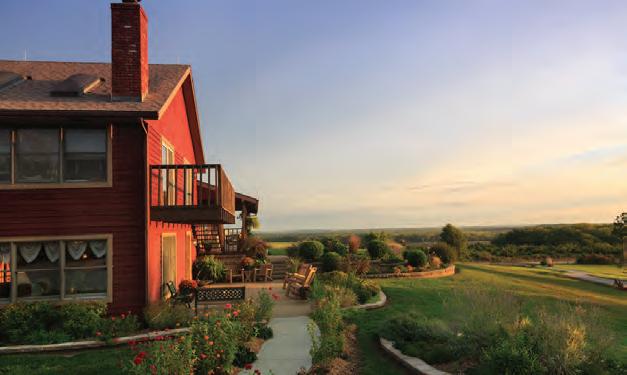
cedarcrestlodge.com
This award-winning bed and breakfast is right outside of Kansas City and is perfect for a weekend getaway this summer. Recognized as a top 25 B & B in the US and receiving a “Certificate of Excellence” from TripAdvisor, Cedar Crest Lodge is a must-do during your time off this summer. Chef, Laura Cunningham is also a Best of Kansas City finalist that runs a scratch kitchen and serves breakfast, lunch, and dinner for guests. You’ll also enjoy the personality and ambiance that their luxury rooms and suites deliver. Add in amazing views and the peace and quiet of the countryside and you have the perfect environment for a romantic weekend.
PAOLA , KS
kcwatersports.com
Summer vacations don’t always require out of town travel and overnight stays but can be day-long adventures. Visit KC Watersports this summer for a day of water sports on their 7.5-acre lake. Paola Kansas is the home of KC Watersports and is less than an hour’s drive from Kansas City. The entire family, from beginners to advanced, can have fun wakeboarding and wakeskating at their cable park facility. They make it easy to learn with a program that helps wakeboarders learn the basics and progress with other beginners at a slower pace. They also offer rentals, a surf shop, birthday parties, camps, and ticketed events.


SPRINGFIEL

wondersofwildlife.org
With over 1.5 miles of trails into immersive exhibits featuring 800+ species, Wonders of Wildlife takes you and your family on an interactive journey through wildlife galleries and aquarium adventures from across the globe. The experience celebrates those who hunt, fish and act as stewards of the land and water. Located next to Bass Pro Shops National Headquarters in Springfield, Missouri, the campus is a centerpiece of America’s conservation capital in Missouri’s Ozark mountains.
springfieldmo.org
Springfield is a hidden gem of the Midwest, offering visitors a unique blend of history, culture, and outdoor adventure. Known as the Birthplace of Route 66, Springfield is home to several museums and attractions that celebrate the iconic road and its role in American history. The city also boasts a thriving arts and music scene, as well as numerous parks and trails for hiking, biking, and kayaking. With its friendly locals, delicious cuisine, and affordable accommodations, Springfield is a great destination for travelers seeking an authentic Midwestern experience.
LAMPE, MO
dogwoodcanyon.org
Dogwood Canyon is a breathtakingly beautiful destination located in southwestern Missouri. The 10,000-acre nature park features stunning waterfalls, crystal-clear streams, and lush forests as well as a variety of wildlife, including bison, elk and deer. Visitors can explore the park's many hiking and biking trails or take a guided tram tour to see the highlights. For those looking for a bit more adventure, Dogwood Canyon also offers horseback riding, fishing, and zip lining. With its stunning natural beauty and range of activities, Dogwood Canyon is a must-visit destination for nature lovers.
visitjeffersoncity.com

Jefferson City, the capital of Missouri, offers a mix of history, culture, and natural beauty that make it an ideal travel destination. Visitors can explore the Missouri State Capitol building, which features a beautiful dome and a wealth of historical information. The city also boasts several museums, art galleries, and restaurants that showcase the local culture and cuisine. For outdoor enthusiasts, Jefferson City is home to several parks and trails, including the Katy Trail, which offers scenic views of the Missouri River.
HOLLISTER,
bigcedar.com/top-of-the-rock/tickets/
Ozarks Heritage is a fascinating getaway that offers visitors a glimpse into the rich history and culture of the Ozark region. The area is home to several museums and historical sites, including the Ozark Folk Center State Park, which showcases traditional Ozark music, crafts, and cuisine. Visitors can also explore the Blanchard Springs Caverns, a stunning underground cave system with guided tours. Outdoor enthusiasts will appreciate the area's many hiking trails, fishing spots, and scenic drives. With its unique blend of history, culture, and natural beauty, Ozarks Heritage is a must-visit destination for anyone interested in the heart of America.
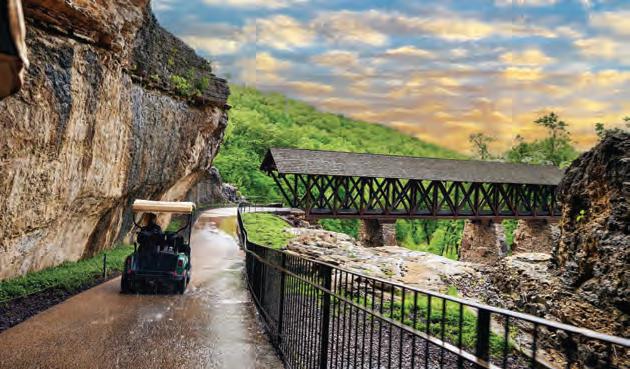

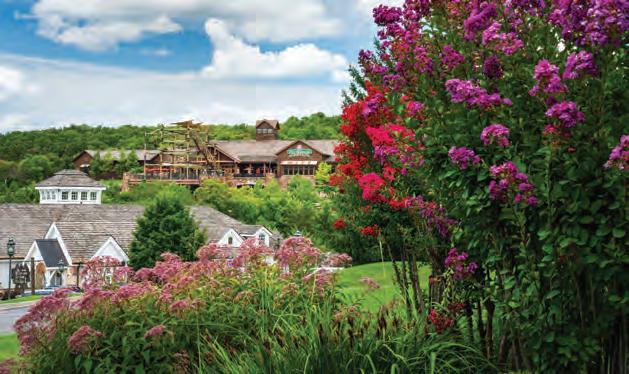
RIDG
bigcedar.com
The Big Cedar Lodge is a place where the entire family can unplug, unwind and reconnect to what matters. You’ll find world-class accommodations, breathtaking views and exciting adventures await. Explore the Fun Mountain entertainment center, kick back and relax with the ultimate pampering package the the Big Cedar Spa or hit the links at one of nature’s finest golf experiences designed with the influence of golf legends. Or, if you’re looking for the ultimate lake adventure, check out the Long Hook marina for boat rentals or your personal tour of the pristine waters of Table Rock lake.
Nestled in the heart of Missouri's wine country, Hermann is a charming community that captivates visitors with its old-world charm and picturesque landscapes. This historic town boasts beautifully preserved German architecture, quaint shops, and welcoming wineries, making it a haven for wine enthusiasts. Stroll through the streets lined with colorful buildings, savor delectable local cuisine, or embark on a scenic vineyard tour. Whether you're seeking relaxation or adventure, Hermann offers a delightful blend of history, culture, and natural beauty.




Springdale, Arkansas is a charming and picturesque travel destination that offers visitors a taste of smalltown America. The city is home to several museums and attractions that celebrate the region's history and culture, including the Shiloh Museum of Ozark History and the Arts Center of the Ozarks. Outdoor enthusiasts will appreciate the city's proximity to the Ozark Mountains, which offer hiking, biking, and fishing opportunities. And for those looking for a unique culinary experience, Springdale is known for its delicious southern-style cuisine, including fried chicken and barbecue.



IT'S SUMMER, SO THAT MEANS MANY OF US WILL BE INDULGING IN TWO OF AMERICA'S PASTIMES...BEER AND BBQ. THE ART OF BREWING BEER AND SMOKING MEATS ARE TIME HONORED TRADITIONS AND KANSAS CITY HAS SOME OF THE BEST CRAFT MASTERS IN THE COUNTRY. WE'VE INCLUDED A FEW KC'S CLASSICS AND SOME NEW THINGS TO TRY AS YOU EMBARK ON YOUR SUMMERTIME FESTIVITIES.

beerkitchenkc.com

While they offer an extensive collection of local and national brewed craft beers to choose from, Beer Kitchen is serving up an innovative lineup of summer cocktails to help you beat the heat. Beer cocktails, that is! Combining the taste of your favorite beers with fresh ingredients to create a unique drinking experience, the new summer Beer Radlers, 'Summer Beer', 'Ginger Fizz', 'Razzle Dazzle', and 'Curiosity', are must-tries, while they’re on the menu this season.
haywardspitbarbque.com
It’s been more than 50 years and Hayward’s Pit BBQ is still masterminding the technique of creating deliciously juicy ribs. Using 100% old school real hickory, you can taste the smokiness in every bite. The ribs are paired with their signature sauce that is a flavorful combination of sweet and spicy, but the kick is in the juice of the jalapeños that is used to put the heat in the sauce. Every Thursday, you can take home a slab for $19.99 and feed the whole family.
meatmitchbbq.com
Meat Mitch Barbecue might be known for their competition-style barbecue and award-winning sauces, but the newest talk of the town is the Texas Ranger Sandwich. The tender Black Angus brisket, cooked with Meat Mitch's signature blend of spices, is the star of the show. Topped with a rich pepper jack fondue and the satisfying crunch of crispy onion rings, one bite of this sandwich and you'll see why the Texas Ranger is a fan-favorite!


jackstackbbq.com
What’s new in barbecue? Fiorella’s Jack Stack recently launched the “The Stack Sandwich”. It features their signature blend smoked sausage made locally in Kansas City and is blended with slow-smoked beef brisket, pepper jack cheese, honey-chipotle barbecue sauce, and a crispy onion ring – served with fries. You’ll want to make this one of your mouth-watering favorites. Available for dine-in or carryout at all six restaurant locations.
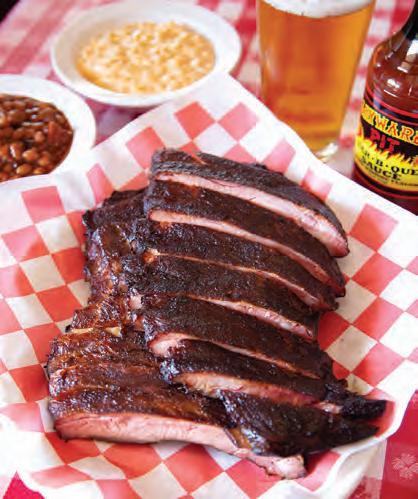
cinderblockbrewery.com
Real Fine Lager is a light, crisp brew that pairs perfectly with summer. Coming in at 4.2% ABV, making it super crushable and refreshing for hot summer days. Bring RFL camping, to the pool, or on a hike, or make it your lawn mowing motivation. Pairs well with patios and BBQ’s!
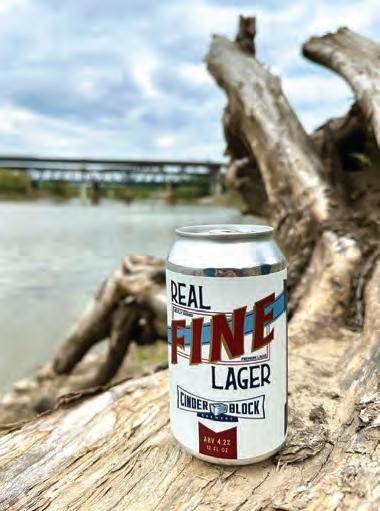
blindboxbbq.com
The Notorious P.I.G. is a customer favorite at Blind Box BBQ. This Signature Sandwich is piled high with a unique blend of flavor combinations and textures. You’ll bite into locally made smoked sausage, juicy pulled pork, awardwinning mac and cheese and crispy onion straws, served on a buttery brioche bun. It's been known to leave onlookers gawking as it passes by their table, wondering how all that deliciousness fits on one bun.

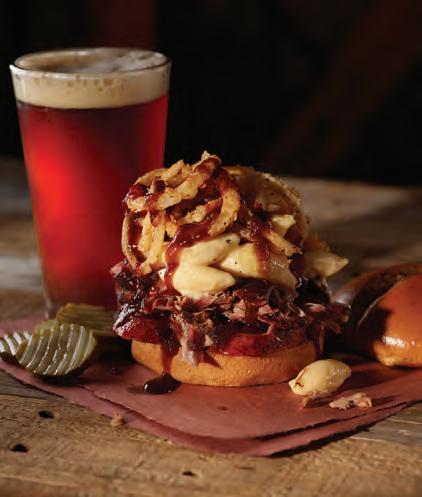
charbarkc.com
If you're a fan of BBQ sandwiches, Char Bar's Burnt Heaven won’t disappoint. With a combination of creamy coleslaw, crispy fried jalapeños, tender smoked burnt ends and hand-cranked sausage on a soft butter-toasted egg bun, the Burnt Heaven is sure to become one of your favorite meals in Westport. Pairs perfectly with their locally brewed craft beer, the "Charbarian Kolsh", exclusively brewed for Char Bar by Strange Days Brewery. It’s a winning combination for beer and barbecue lovers.
bucktuibbq.com
Barbecue is as classic as it comes to the American palette, but if you want to mix things up a bit, you’ll want to try the Thai American mashup that Buck Tui delivers. The secret is that the bright, hot, fruity, complex Thai flavors pair extremely well with smoky, earthy American barbecued meats. The X Man sandwich brings the heat with brisket paired with heavenly pork and Thai sausage; served with papaya slaw and creamy tiger cry sauce.

Dr. John Swab, a renowned orthopedic surgeon, is transforming the use of advanced technologies and innovative techniques. With a passion for providing the highest level of care, Dr. Swab is recognized for his commitment to improving patient outcomes.

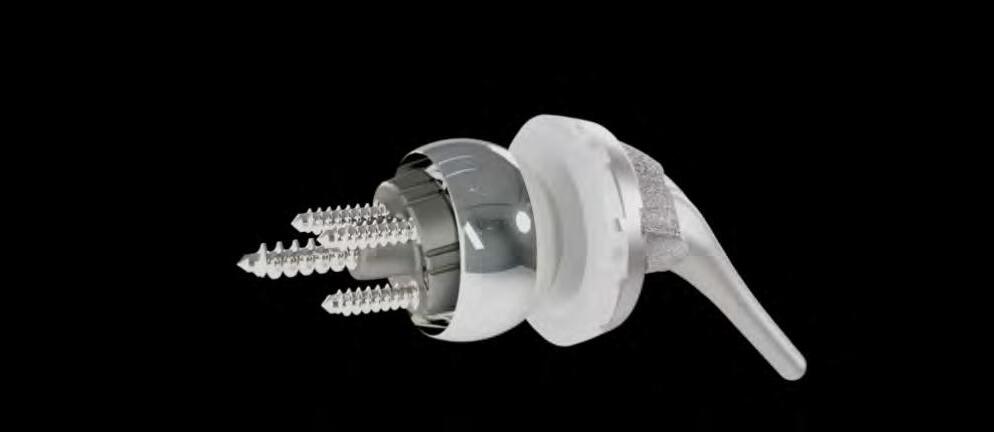
With a background in organismal biology and experience as a KU college football player have shaped his compassionate approach to patient care. He views his relationship with patients as a team e together based on their needs and desires. Outside of medicine, Dr. Swab cherishes spending time with his wife, three children, and their rescue dog, in Kansas City.


Dr. Swab specializes in Total Shoulder Replacements. “Reverse” total shoulders help patients with complex issues by redistributing the workload from a damaged rotator cuff to the deltoid muscle. Another option, utilizes stemless shoulder implants to minimize bone loss whenever possible. Dr. Swab demonstrates an artistic approach to shoulder surgery. Such as the 3D "PreView™" This software allows for surgical planning, evaluation of various options in the computer, not the patient. Digitally creating a perfect shoulder, entering the OR with a complete game plan. These innovative techniques in traditional, reverse and stemless shoulder replacements are transforming the field. He combines a deep understanding of human anatomy to achieve elegant results. Attention to detail makes him an artist and a surgeon.
Dr. John Swab is revolutionizing shoulder surgery with his scientific and artistic approach. His use of advanced technologies, expertise in reverse, stemless and inset shoulder procedures Along with his depth of understanding of anatomy shows dedication to improving patient outcomes. Dr. Swab's commitment to excellence and compassionate care has made him a respected figure in the field of orthopedic surgery.
Macarons seem to embody everything French. In typical French fashion, they’re smaller than the average American single-serving portion size, yet they are full of miraculous textures and rich flavor. The petite cookies hold so much depth it’s almost pretentious.

If you “don’t get the hype” behind macarons, it’s most likely because you haven’t had them from Kate Smith Soirée. Macarons are Smith’s specialty among the other sweet treats she slings in her downtown Overland Park bakery.
With a stockpile of over one hundred and thirty flavors, the display case is constantly rotating with classics like lemon meringue, lavender or champagne. But Smith is also venturing beyond the traditional and experimenting with non-French flavors such as Fruity Pebble, chocolate and Guinness and cotton candy.

This Francophile’s dedication to the tedious and time-consuming French method results in shells that have a delicate crust with a soft and chewy inside. Fillings of velvety ganaches, buttercreams and curd are sandwiched between the shells.
Smith’s two- to three-day process is key to the cookie’s freshness. Let the macaron melt in your mouth and savor it like the French—slowly and leisurely. —TYLER
SHANE
OR THIS SECTION of the magazine, I typically embrace the gluttonous task of dining out on the magazine’s dime to help determine where you, dear reader, should spend your hard-earned cash. I chose to waive that privilege this time around so I could attend an intensive whole-hog workshop in March.
The three-day event consisted of a ten-person group taking part in the hands-on process of bringing a pig from pasture to table. To clarify, on the first day, I saw the pig wiggle its nose and sniff the air as we approached it with a loaded rifle. Two days later, we were tearing meat off its boiled head to make carnitas tacos.
I experienced shock, fascination, horror, community, blood, guts and adventure. And, yes, I would do it all over again. In a heartbeat.
Consider this your official trigger warning. If the grisly details of disemboweling a pig carcass are not in your personal book of curiosities, feel free to skip to the next article. Maybe you’re a vegan or just willfully ignorant to the particulars of killing animals for food. I don’t blame you. But this essay is not for you.
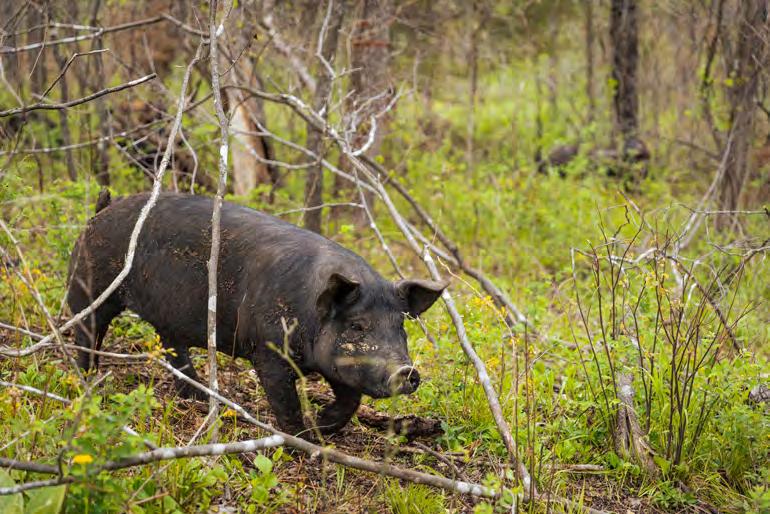
Before I began writing about food, I was making it in kitchens around KC for nearly a decade. Most notably, I worked a long stint as a chocolatier at Christopher Elbow Chocolates. When the pandemic hit, like others, I challenged myself to break up my usual industry work with culinary projects that emphasized buying local.
Instead of buying packs of chicken parts from the grocery store, I bought whole ones from the farmers market and butchered them for meals. Over time, being more involved in the preparation of my food became a deeply satisfying practice of prioritizing new skills and self-sufficiency over convenience.
As it turns out, when you regularly purchase anomalies like chicken feet, bone marrow and beef suet, conversation is bound to strike. I developed a relationship with the Price family of Five Mile Farm, a vendor at the Overland Park Farmers Market. After an inspiring tour of their regenerative family-run farm, I confessed to Lucas, husband and father of the Price family, that the thrill of breaking down whole chickens, tenderloins and pork sides had subsided and I was aiming for bigger game.
I was struck by a newfound desire to connect to the animals I was eating, but as a lifelong city girl, I wasn’t sure where to start. As fate would have it, Lucas was hosting Andy Lane and Doug Wharton of Ohio-based Hand Hewn Farm to teach “the entire process of how to efficiently, beautifully and practically take a hog from pasture to plate ethically and humanly,” as described on the farm’s website.

I have never wanted to be part of an animal’s death. But as I thought more about the animals I was consuming, I became aware that the animal’s health and life are connected to my wellbeing. This realization brought about a near-spiritual call to confront the truth behind the food I was eating—even if it meant witnessing death.
I wondered if I could view a pork chop the same if I had seen it as part of a whole, living creature just days earlier. It was a challenge I chose to embrace, and on the first day of the workshop, I gathered on Five Mile Farm with ten other strangers to kill a hog.
Lane and Wharton began their introduction with a speech that immediately put my nerves at ease. “This is a very serious thing,” Lane said in a calm but firm tone. “We do not enjoy killing animals.”
The workshop’s intention is to teach people how to feed their families with efficient nose-to-tail butchery. It was an act of homesteading, a common practice before the days of supermarkets and factory farming.
Previous Spread Odd Bird Farm, another Overland Park Farmers Market vendor, specializes in unconventional methods of sustainability, such as using the byproducts of craft food productions for pig feed and preserving the genetic diversity of their Meishan pigs, which thrive in a natural environment.
This Spread Lucas and Ilenana Price on their farm. The last two days of the workshop were spent at the cozy Casa Somerset bed and breakfast utilizing their large kitchen for our butchering needs. Other local businesses that helped host the workshop were Brew and Brews Company, Sky-view Farm and Creamery, Pat and Rachel’s Gardens and Louisburg Cider Mill.
Lane and Wharton’s spiel ended with them reading the poem “For the Hog Killing” by environmental activist, farmer and writer Wendell Berry.
Walking not-so-bravely toward our future meal
Here’s how it would go. Lucas Price would shoot the pig between the eyes. Wharton would then immediately knife its jugular to drain the blood while a third person would collect the pig’s vital fluid in a bowl for blood sausage. It would all happen within seconds.
The death was instantaneous. The next thing I knew, I was being handed a bowl of blood to stir so it wouldn’t coagulate. In my nervousness, I spilled some on my hand. I gazed at my crimson-covered wedding ring and felt a surge of vitality course through me. The communal act of hard, dirty, gory work had awakened something metaphysical in me. Any doubts I had just moments ago were gone. I was alive.
The men hoisted the pig in the barn and lowered its body in a barrel of one hundred and fifty-degree water to scald the first layer of skin. After peeling off the skin and popping the toenails off, the pig began to slowly transform from livestock to its culinary alias of pork.
After a few tedious knife cuts, Lane began to slice down the belly and a labyrinth of innards spilled out. Our group marveled at the macabre spectacle like the Rembrandt painting, “The Anatomy Lesson of Dr. Nicolaes Tulp.”
Lane removed the entrails, and Wharton began cleaning the organs we planned to use for culinary purposes (the heart, liver, kidneys, intestines and bladder). It took multiple men to saw the pig in half.
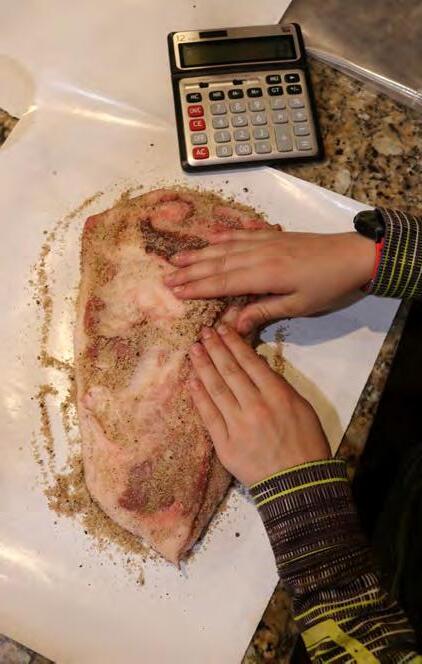
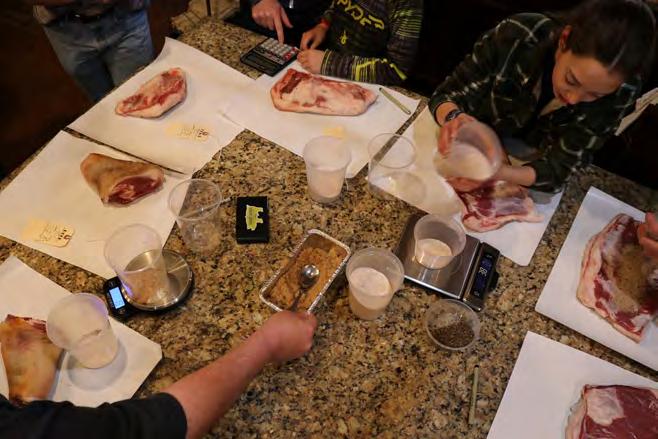
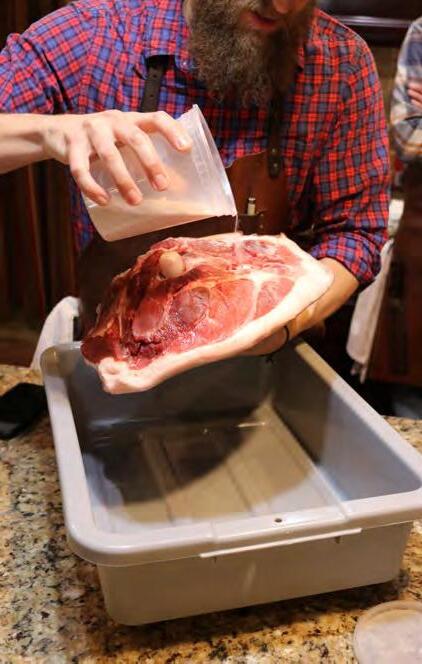

During the remaining two days, everyone took turns quartering the pig into shoulder, ham, loin and belly sections. We broke those cuts down into pork chops, spare ribs, bacon and pork butt and the hind legs into prosciutto. We cured jowls and bacon and vacuum-sealed them to age. We made chicharrones from the skin, lard from the fat and stock from the head, hocks and trotters. Liverwurst was stuffed and cooked inside the bladder sack, links of blood sausage were stuffed in the intestines, and offal patties were wrapped in the caul fat. Every bit of the pig that could provide purpose did.
We couldn’t enjoy the cured meats (one attendee bought the whole pig and took the parts home with him), but Lane and Wharton had brought along meats they cured on their farm, including prosciutto, capicola and speck. At the very end of the workshop, everyone pitched in to create a massive charcuterie board with the ready-to-eat foods from the weekend along with Lane and Wharton’s cured meats. Finally, we feasted, and I have never eaten a more well-deserved meal.
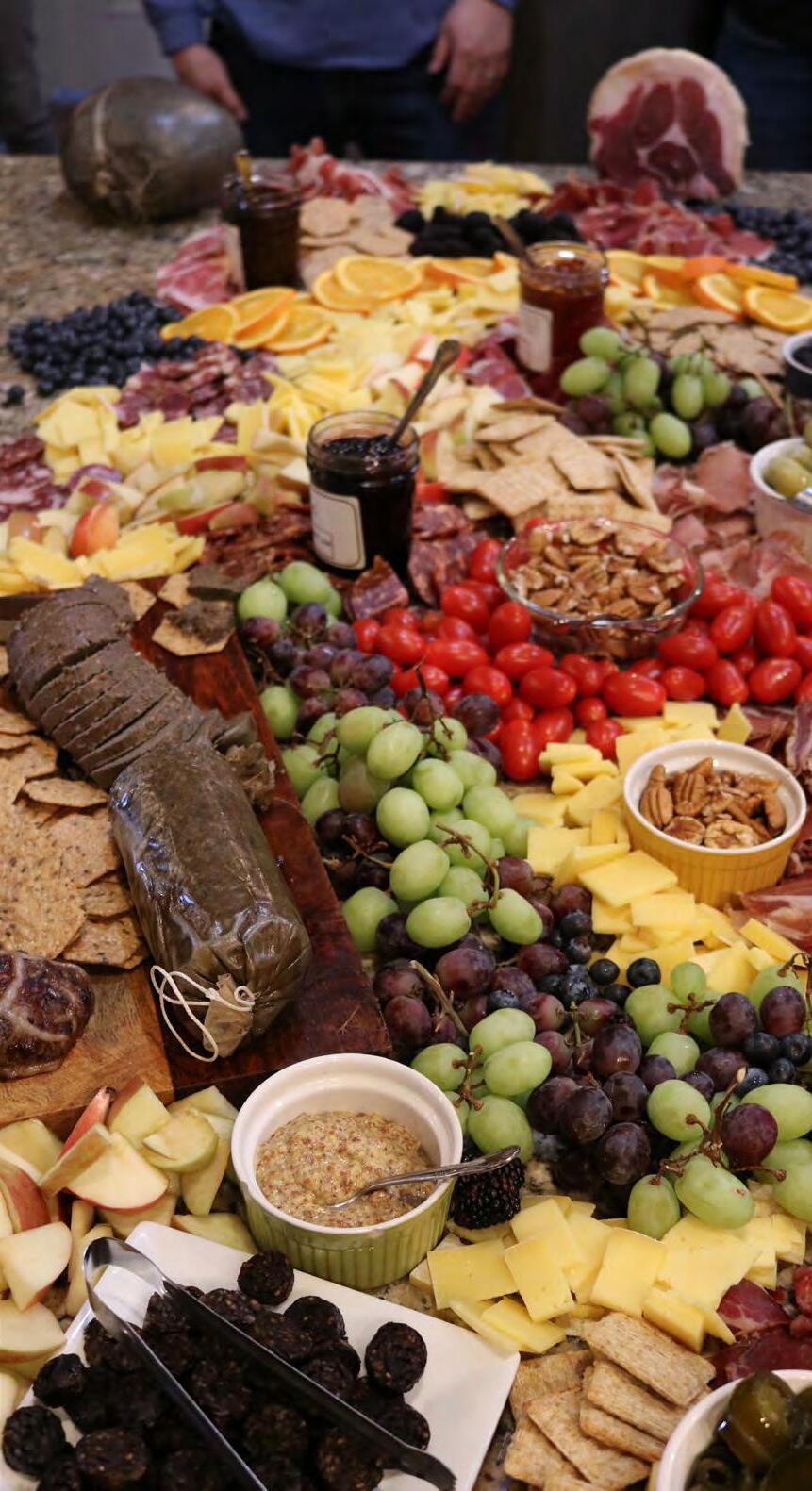
It has always felt honorable and honest to work with my hands. There’s fulfillment in laborious creation. But to learn a craft that results in nourishment
might be some of the most honorable work of all. And, simply put, there is an unparalleled camaraderie in coming together to embrace work that others shy away from. As I reflect, it makes sense that I sought out the Price family. I was searching for connection, community and security during the chaos of the pandemic.
You may wonder why. Why risk replacing a restaurant review to tell a niche and gruesome tale? Admittedly, as a culinarian, it was a selfish endeavor to satisfy my curiosity, deepen my knowledge and connect more with my food’s ecosystem. But I’d also like to think it was to shine a light on the people who do the hard work.
Farmers are constantly confronting nature’s brutal cycles. Because of this, small family farms like Five Mile Farm know they cannot operate without community. During the workshop, fellow farmers market vendor Taco Naco catered several of the meals, and the pig was a Meishan from Odd Bird Farm in Weston. Farmers know they cannot operate without the help of others.
Lane and Wharton led us with finesse and honor, and the hospitality the Price family gave us on their farm was like a scene out of The Andy Griffith Show. They graciously let me peek into their world for the weekend, and I am left with an abundance and wealth that no tablecloth dinner can replicate.
“As a culinarian, it was a selfish endeavor to satisfy my curiosity, deepen my knowledge and connect more with my food’s ecosystem.”PHOTOGRAPHY BY TYLER SHANE
THERE’S A REASON why the Cerveza Royale brew at Stockyards Brewing Co. is a summertime staple. The Mexican-style lager is traditionally light bodied, with its brewing components of light malted barley from Chile and German Perle hops. But the subtly sweet finish can be attributed to summer’s golden produce: corn.
“It’s not super dry like a traditional European style lager might be,” says Stockyards owner Greg Bland. Traditionally, lagers use a bottom-fermenting yeast, which produces at a lower temperature and “lagers” or “matures” over time. With the addition of flaked corn and corn sugar, the Cerveza Royale has a refreshing aroma similar to that of a Modelo or Pacífico.
The craft brewery’s wood-paneled
walls and panoramic painting of the Wild West may not be the obvious ambiance to indulge in your summer brew. But like its golden hue lager, Stockyards is versatile.

“That’s what’s great about this beer is it can fit the needs of beer nerds who want to try some locally produced, traditional Mexican-style lagers,” Bland says. “But it also fits the needs of your average beer drinker who just wants a clean, light, easy-drinking beer.”
Emphasis on “light.” It’s an easy sipper with a crisp bite. Beer snobs may not appreciate the lime wedge that comes nestled on the rim—citrus can rob a beer of its keypoint flavor components—but I squeezed and plopped it into my drink. After one tangy sip, I was ready for sunshine and tacos.


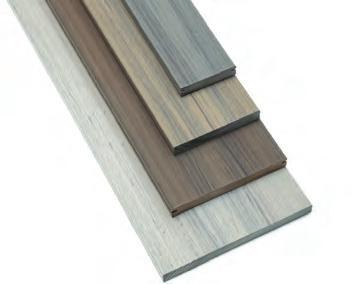
WHEN SADIE RUCKER sits down for our interview, she is wearing silver-tipped Western boots, Sasson denim jeans and a cropped quilted jacket, and she’s carrying a handbag in the shape of a chicken. Almost the entire outfit is thrifted, yet every piece fits her body like a glove. She has the look of a modern-day Dolly Parton (partly due to her long shaggy blonde hair), but Rucker’s Western style is not just an aesthetic. Her blue-collar roots and down-to-earth style show when I tell her I’m going to record our conversation.
“I cuss a lot,” she replies. “Hope that’s okay.”
Rucker was born and raised an hour south of Kansas City in Greeley, Kansas, where pearl-snap shirts, denim and cowboy boots were the norm for her and her hometown peers. Her best friend and father, Leon Lickteig, raised white-tailed deer on their family ranch. In true small-town fashion, there were only forty-two kids in her entire school.
Needless to say, growing up with her brother and being raised by their father in a rural Kansas town, fashion just wasn’t a priority for much of Rucker’s younger years. But she says she always found elegance in the workin’ man’s wardrobe.
“My uncle Steve was a steel worker,” she says. “He would wear dark denim jeans and cowboy boots. I remember being little and loving the way he would cuff his jeans over his boots.”
Coffee: Urban Prairie is where I go every morning. They’re so nice and take care of me. I call them, they know exactly what I want, and my drink is sitting there waiting for me. They know me by name and always comment on my outfits. I get a dirty chai with oat milk, sometimes a double if I’m fatigued.

Post-work Drink: I love taking people after work to The Primrose. I love going in there, getting a good cocktail and chatting with someone. It’s so intimate, and the owner, Abby, is so sweet and kind. She loves having me and whoever I’m dragging in there. I love the Aloe Refresher cocktail because of the rosemary.
Consignment Store: Lulu’s Boutique off Johnson Drive. I love popping in there and buying some consignment vintage from the owner, Jenny. Sometimes I go in there just to hang out with her because I love her so much. She also sells local makers there. She’s been such a huge help in my journey of owning a business in Mission.
Rucker’s style can be described as Western prairie girl with a hint of ’70s glam. Her closet is highly curated, but she ultimately credits her refined style to learning “the art of thrifting.” The best finds are in the men’s and boy’s sections, she says.
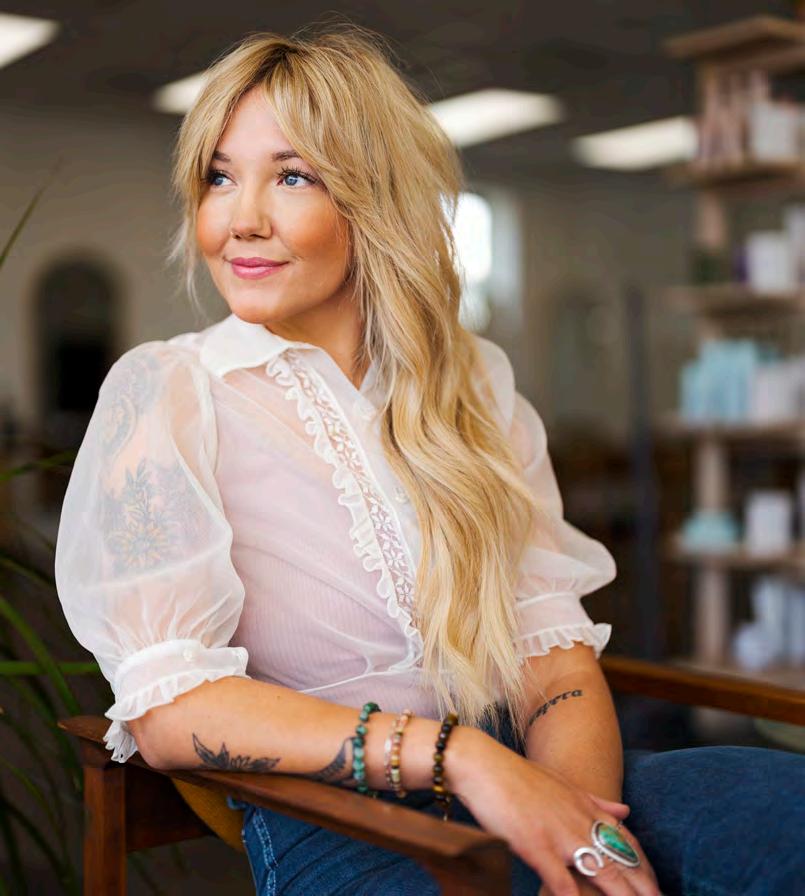
Her love for the secondhand clothing hunt was bred out of necessity. Shopping for new clothes was never an option growing up, Rucker says. Nevertheless, it’s a disservice to put Rucker into the “small-town girl” box.
“Back home, everyone thinks I’m supercity, but people up here think I’m a hillbilly,” says the hairstylist. “So why not be a cake eater? I’ll live in the city, own a salon, but also own cows and a Shetland pony.”

When asked if she ever feels too “done up” returning to her hometown with her faux fur coats, turquoise jewelry and chic style, Rucker maintains a firm “no.” She compares her dedication to fashion to finding one’s faith.
“I am so passionate about it because it took me a long time to find out how to do this,” Rucker says.
Her journey as a hair stylist opened her up to being “feminine and girly” and helped her experiment and learn how to dress for her body shape, creating balanced day-to-day looks.
American Honey ( 6630 Martway St., Mission, KS) is the name of Rucker’s salon she co-opened last month in Mission. You can find it by looking for the massive mural of a cowgirl riding a bronco. If you’re looking through her curated collection of vintage clothing, Lil’ Sadie Vintage, located in her salon, and find a piece you’re not sure if you’re comfortable rocking, let Rucker’s sage advice provide clarity: “Express yourself. Who gives a shit?”
Sadie Rucker talks the art of thrifting, the cowgirl aesthetic and her perfect day in KC.
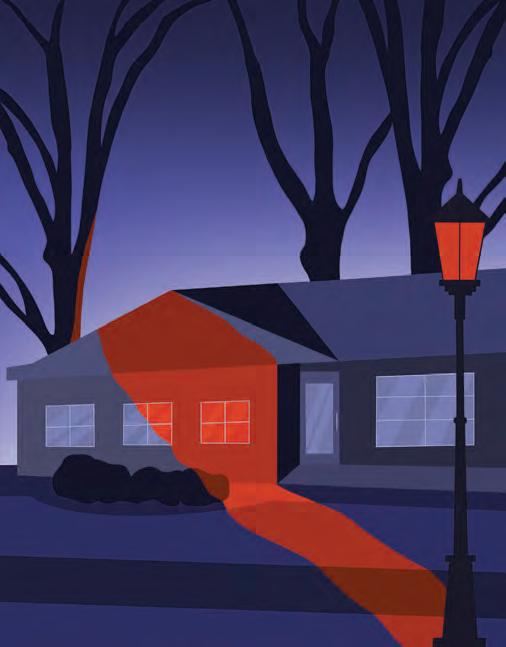




IF YOU WERE to go back to 2015, the last time the Royals competed for a crown, your options for great barbecue were pretty limited— not just at Kauffman Stadium, but across Kansas City. In fact, you could make the argument that the three new pits serving craft ’cue inside the K last year make better barbecue than existed anywhere in KC the last time the Royals had a winning season.

“In the entire city?” says Scott Umscheid, pausing to think for a few seconds. “Yes. I’d have to answer that yes.”
Umscheid runs Scott’s Kitchen up by the airport, a very good pit that has appeared on our biannual top 10 list. His was one of three pits tapped to operate at the K this year, along with Smoak Craft, a catering operation, and the venerable Chef J of the West Bottoms. The connection was made by Danielle Lehman, a former Kansas City magazine contributor who is a contractor for Aramark. Lehman recruited the pits to come out for the Royals Rally, an off-season fan festival. Six pits served barbecue bites in the Diamond Club,
and three ended up signing on to serve at the stadium on a rotating schedule.
“We really are out there to support each other and help each other out, so it’s a fun little relationship with those guys,” Umscheid says.
Among those guys is Cade Colson, owner of Smoak Craft. Colson is a pharmacist by day, but he’s been running a barbecue catering operation on the side since the pandemic. Colson lived in Texas for thirteen years before coming to KC, but he doesn’t like to call his tender sliced brisket “Texas-style.”
“It’s kind of an old-world style,” he says. “There’s a lot of Czech heritage in central Texas, which is where that style came from, so it’s more salt and pepper and meat.”
The standout bite from my tray of Smoak Craft during a Friday night home loss to the other contender for the worst team in baseball, the Oakland Athletics, was that brisket with Colson’s unique coffee barbecue sauce. He makes it with help from a Lenexa roaster that makes a product called Bloc, a microfined coffee powder that’s processed like cocoa. “I feel like coffee is a kindred spirit to the smoke and fire involved in barbecue—the roast profile is there for both,” he says. “And you definitely drink a lot of coffee
When Scott’s is serving, you won’t have that barbecue sauce, but you will have a full menu, including stunning platters of craft ’cue.
“We have a pretty elaborate menu for the K,” Umscheid says. “They sort of tried to talk me out of it. What we didn’t want to do was show up and do a version of a stadium nacho. What we wanted to do was bring our food cut and plated to order, and that’s what we’re doing.”
That means chipotle-ghost pepper and pepper jack cheese sausages, Texas-style sliced brisket, pulled pork and racks of ribs.
Being at the stadium is its own reward, Umscheid says, even if the team is on pace to lose a hundred games.
“They’ve been totally first-class to work with, bringing us on and making us feel like a part of their team,” he says. “We’re getting to know our neighbors, the bartenders, the funnel cake sellers and the security guards in our section. It’s really a community out there.”
“
“What we didn’t want to do was show up and do a version of a stadium nacho. What we wanted to do was bring our food cut and plated to order.”
Voting among the five finalists is now open. Final ballot closes on Saturday, June 10. Winners will be announced online and in print on Tuesday, August 1.
Vote for your favorites in KC’s Best in 300+ categories at vote.kansascitymag.com

Chef Amante Domingo from The Russell recently opened new fine dining restaurant Noka (334 E. 31st KCMO). Located in downtown’s Martini Corner, Domingo likens his new place to a “Japanese farmhouse,” offering an internationally inspired small-plates menu. Items such as miso striped bass, tempura-fried beef tongue, shrimp risotto and A5 Japanese wagyu beef are just a few of the eclectic menu’s highlights. The drink menu features an extensive list of reserve wines along with sake and soju programs.
Noka, which is Japanese for “farmer,” refers to the restaurant’s aesthetic and attitude more than its food. Large communal tables and natural textures of ceramic and genuine farmhouse wood fill the dining
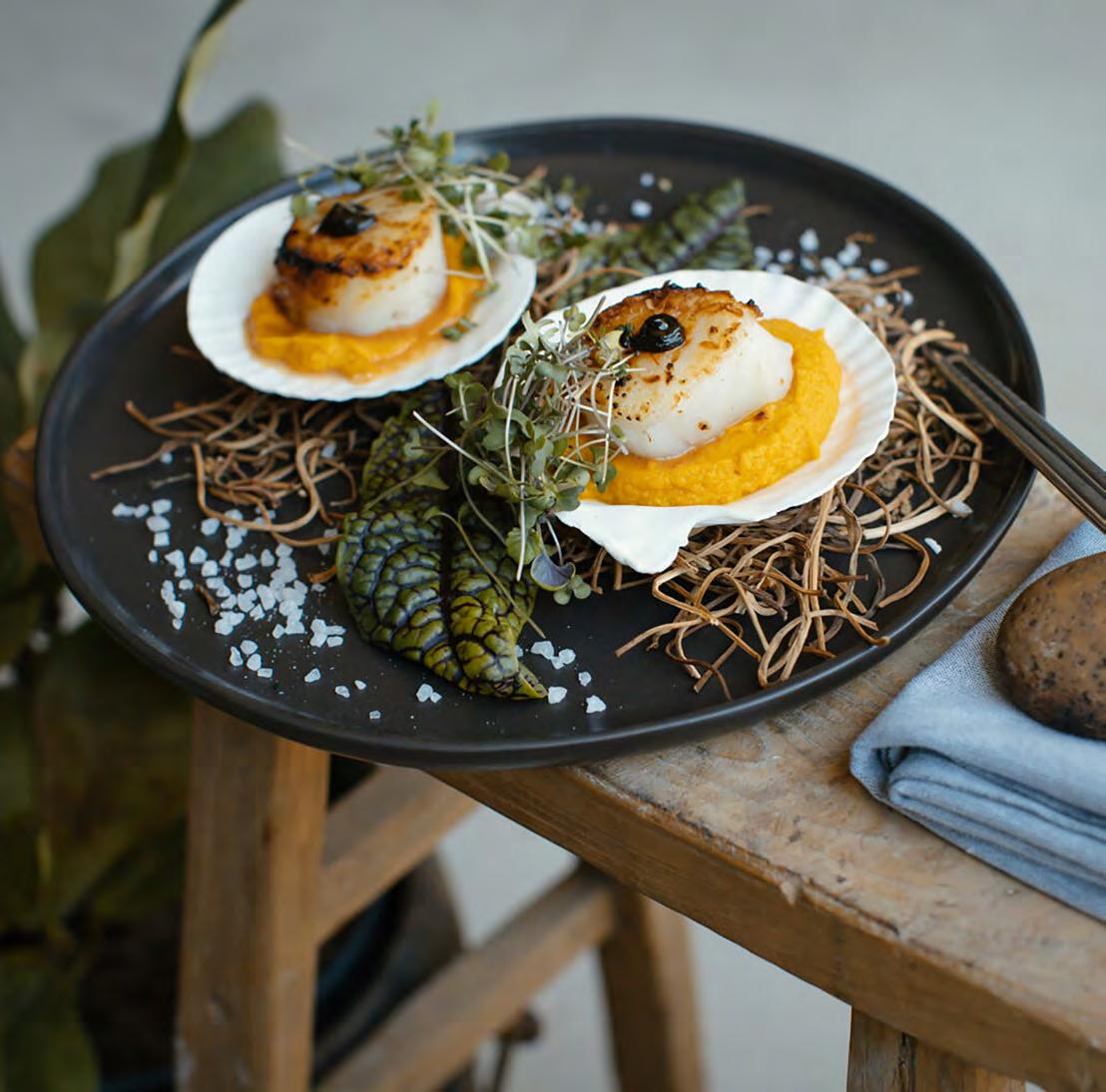
room. The sleek yet earthy atmosphere is elevated with an open kitchen and a custom Japanese binchotan charcoal grill. Live fire is Domingo’s preferred way of cooking. “If there’s not a fire in the kitchen, I’m not gonna be there,” Domingo says.
After his father’s passing last year, Domingo, in his grieving process, began to collect materials from his parents’ one hundred and fifty-acre farm. These raw materials were used in the restaurant’s design to exhibit a wabi-sabi aesthetic, meaning perfectly imperfect.
Domingo is the owner of Union Hill’s The Russell and previously opened Tailleur along with Heather White.
From farmers market pop-up in 2019 to full-service restaurant, Taco Naco is having a wildly successful ride. Ranked twenty-two on our Top 40 KC Restaurants list, the beloved taqueria is now working on a second location in the heart of Westport (4141 Pennslyvania Ave. Suite 103 KCMO).
The new restaurant is replacing the former Mexican restaurant Port Fonda. This second locale will be like
Poïó Mexican BBQ took to social media to announce it had “an incredible run” but would soon be closing up shop (800 S. Seventh St., KCK).
“We are grateful to our devoted patrons for supporting us over the years,” the Instagram post read. “Our team is humbled by the endless positive feedback we have received on our concept, menu, and unique approach to dining.”
The fast-casual barbecue joint has been in business since the fall of 2019, serving traditional barbecue with innovative twists. The menu showcased wood-fired chicken and ribs along with sides of kimchi fried rice and poblano mac and cheese.
You’ll still be able to find a few of Poïó’s barbecue dishes at the new KCI airport in the Made of KC food hall.
Restaurateurs Andy Lock and Domhnall Molloy will be adding a third location of their popular Third Street Social restaurant in the Northland.
the Overland Park location but with a twist.
The same extensive lineup of tacos and margaritas will star at the new establishment, but the bar will be larger so “patrons can see the tacos in action and can interact with bar staff,” says Brian Ruiz, Taco Naco’s director of strategy and branding.

The Westport location hopes to have a lively brunch with live Latin music, Ruiz says.

The Lenexa Public Market (8750 Penrose Lane, Lenexa) is fast becoming an international food hall, with offerings such as African Dream Cuisine and Sohaila’s Kitchen. It was the birthplace of Taiwanese street food vendor Chewology before chef Katie Liu transitioned to a full-service restaurant in Westport (which we christened Best New Restaurant of 2022). Now, Lisa Hamblen’s Kimchi and Bap will soon be added to the list.
Hamblen began showcasing her traditional Korean cuisine in a series of pop-ups last year. She nearly sold out each weekend with her classic dishes of bibimbap and japchae noodles. In her last 2022 pop-up, she made dosiraks (Korean lunch boxes) full of kimchi, leafy greens, fermented vegetables, marinated beef bulgogi and more.
Driven by nostalgia, Hamblen is a self-taught chef inspired by her mother’s Korean cooking. “I want to make it like something your parents would have made or your grandparents would have made,” Hamblen says.
The restaurant, known for its classic American burgers and comfort food, will occupy a seven thousand-square-foot space as the anchor of Woodstone, a $60 million luxury apartment and mixed-use project within the Metro North Crossing development. A late-fall 2023 opening is planned.
The first location opened in downtown Lee’s Summit in the seventy-year-old historic Arnold Hall building, where former President Harry S. Truman first announced his political ambitions. The street serves as the source of the restaurant’s name, combined with social in reference to the chef-driven social dining experience and large, lively bar.
The restaurant expanded south of the Country Club Plaza to another historic building in 2021.
Metro North Crossing is a notable development in the Northland on the former site of the Metro North Mall. Previously announced and already open are Hawaiian Brothers Island Grill and Whataburger. The partners in Metro North Crossing also own and developed T-Shotz, a fifty-two thousand-square-foot golf entertainment venue that opened there in 2020.
IT’S FITTING THAT an oversized cap gun is hanging off the side of a dusty old brick building in the heart of the West Bottoms. The metallic gray pop artstyle sculpture just adds to the historic area’s outlaw aura.

Looking as if it had just been pulled from a holster, the Wild West-ish toy cap gun juts from the building’s facade. The faux firearm is mounted above the building’s entry and hovers over the sidewalk and pedestrians’ heads.
The gun has been aimed at the street for nearly twenty years. In 2005, creative Joe Hammers decided to open a nightclub in the 1920s industrial brick building. It was a music venue, theater space, nightclub and bar all rolled into one called the Pistol Social Club. Hammers commissioned local artist Burak Duvenci to create something that would get noticed. It makes a statement, but what that statement is, no one is quite sure.
“I think it was quite meaningless on purpose and just a straightforward illustration for their club,” Duvenci says of his 3D sign. “Like, ‘Hey, there’s some fun things happening upstairs in the building. Pay the cover fee and come find out.’” Duvenci, who lived in the West Bottoms at the time and
was friends with Hammers, modeled the sculpture after a real toy cap gun, right down to the raised “Made in China” letters. Originally, Duvenci made the form out of pink insulation foam and PVC pipes and coated it with fiberglass. The original was starting to deteriorate and has since been restored and reworked, Duvenci, who now has a creative agency in Los Angeles, says.
Although the night club at 1219 Union St. is no longer, the gun remains.
“The Pistol was a magical place, something of an anomaly, a haven,” Hammers told The Pitch in 2010, shortly after the club closed. “A beautiful room like that for young artists and otherwise overlooked performers is an oddity locally and nationally.” The loft space now holds various art-related businesses, including art studio spaces and art classes. —DAWNYA
BARTSCH